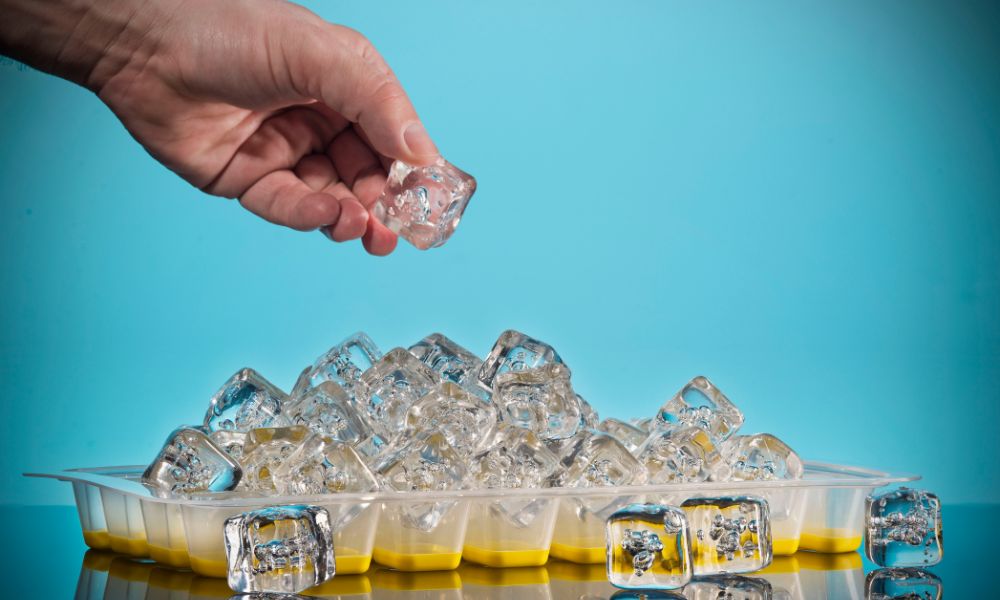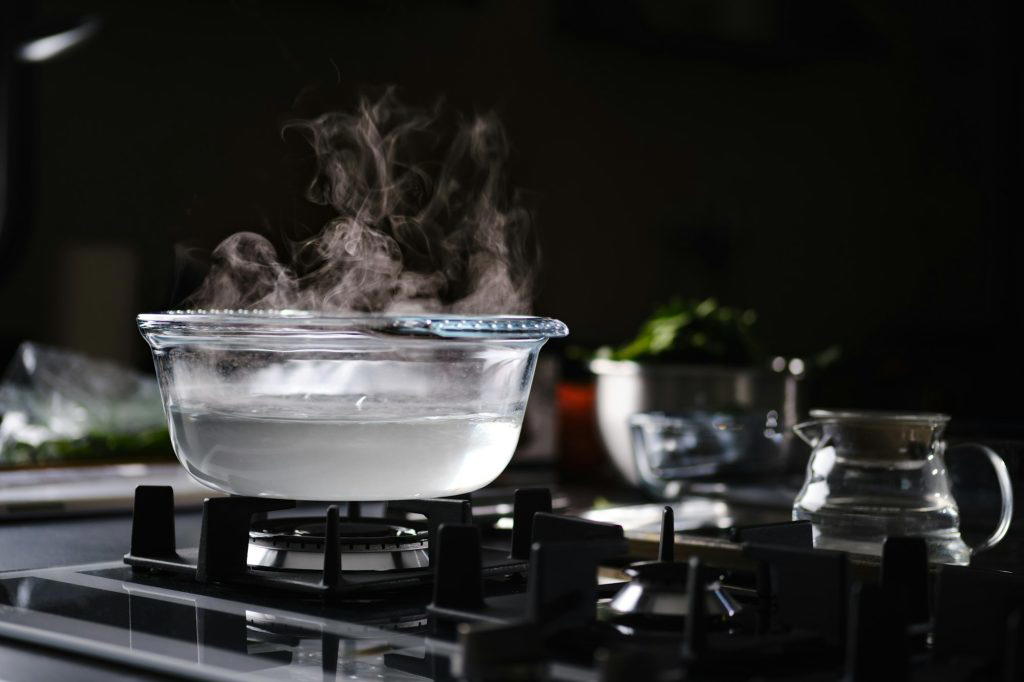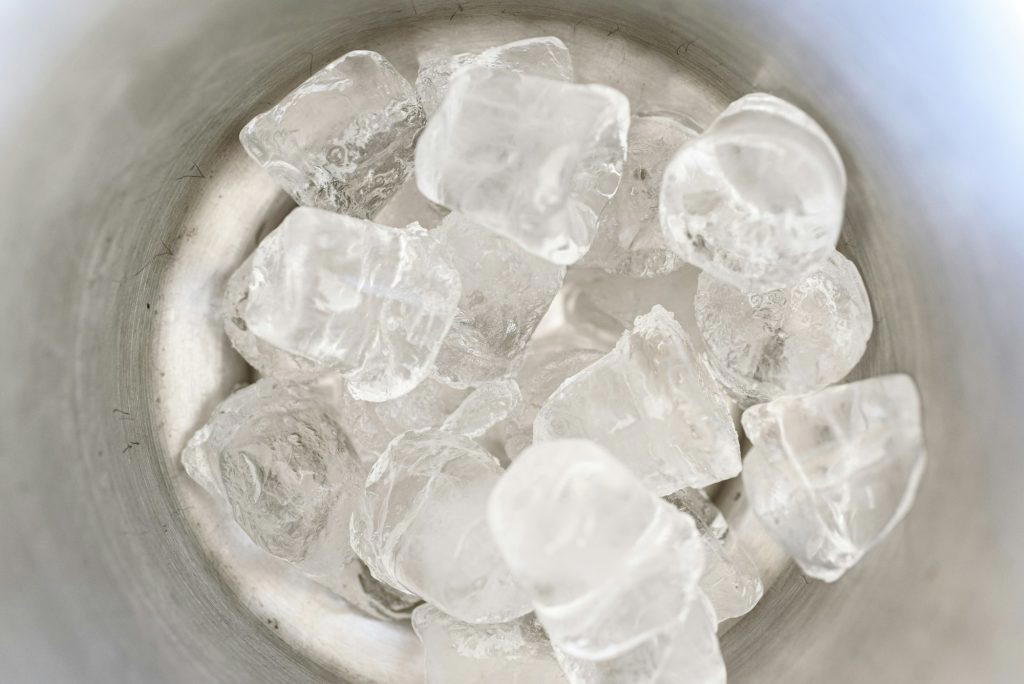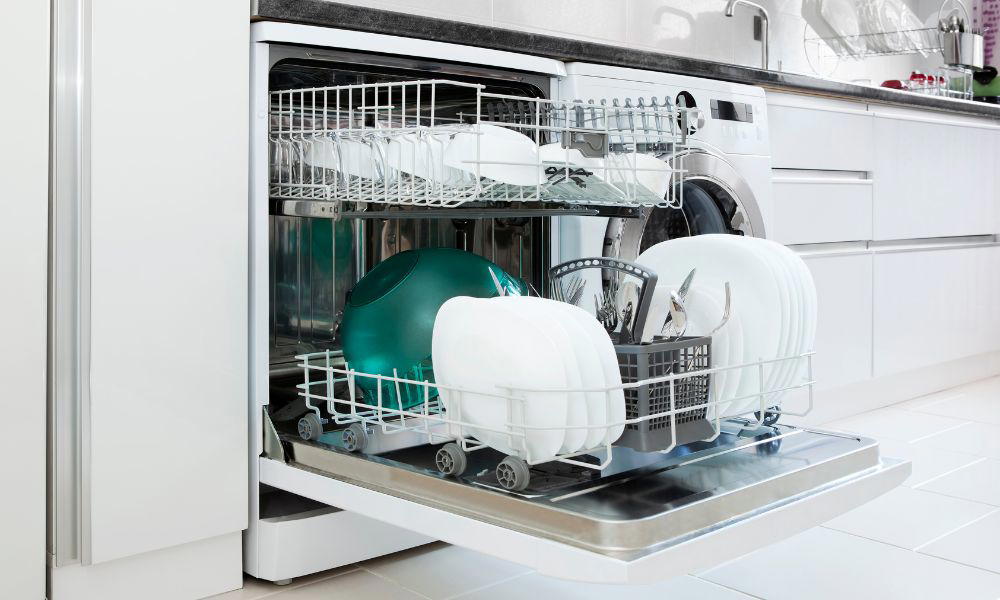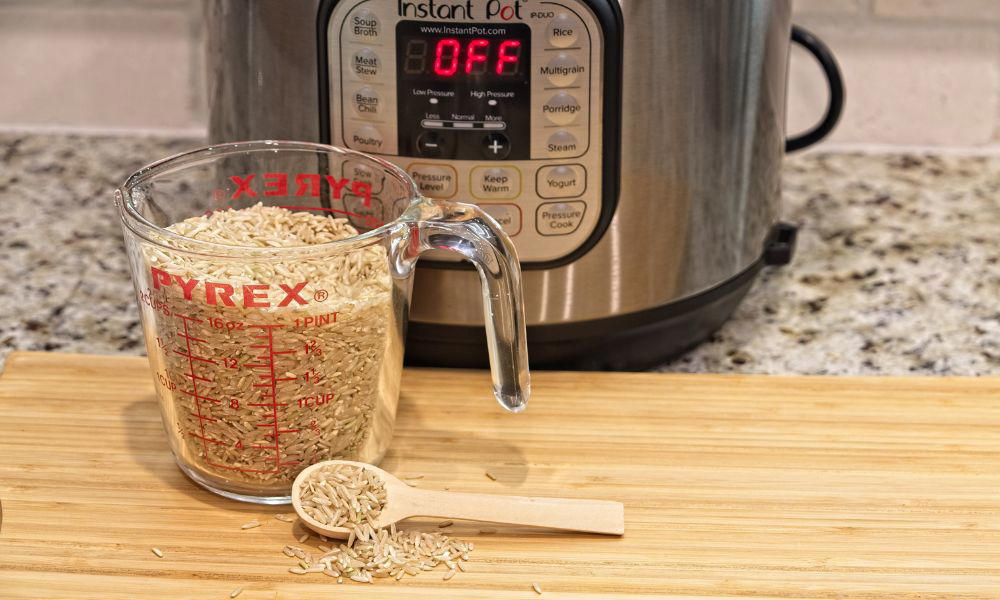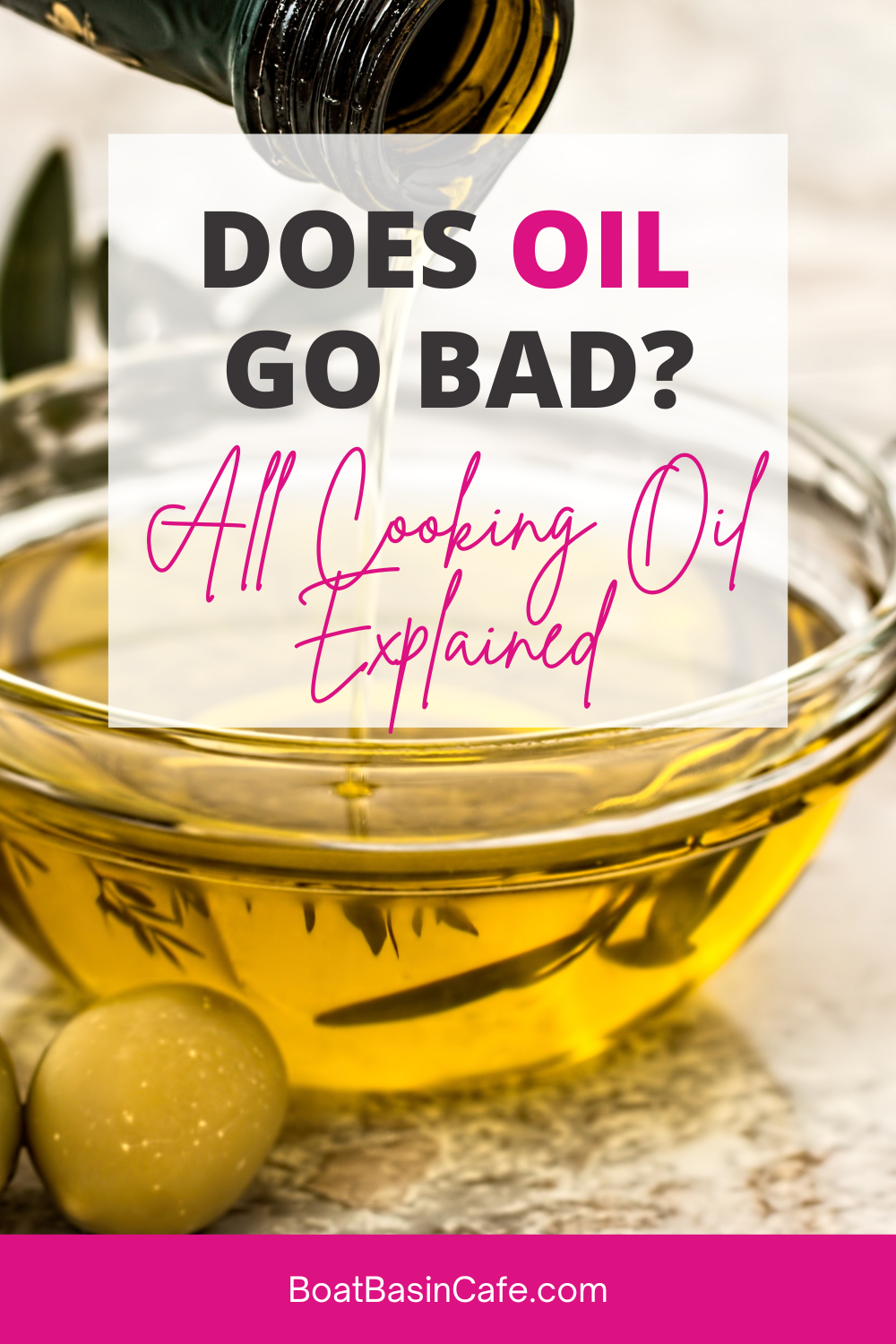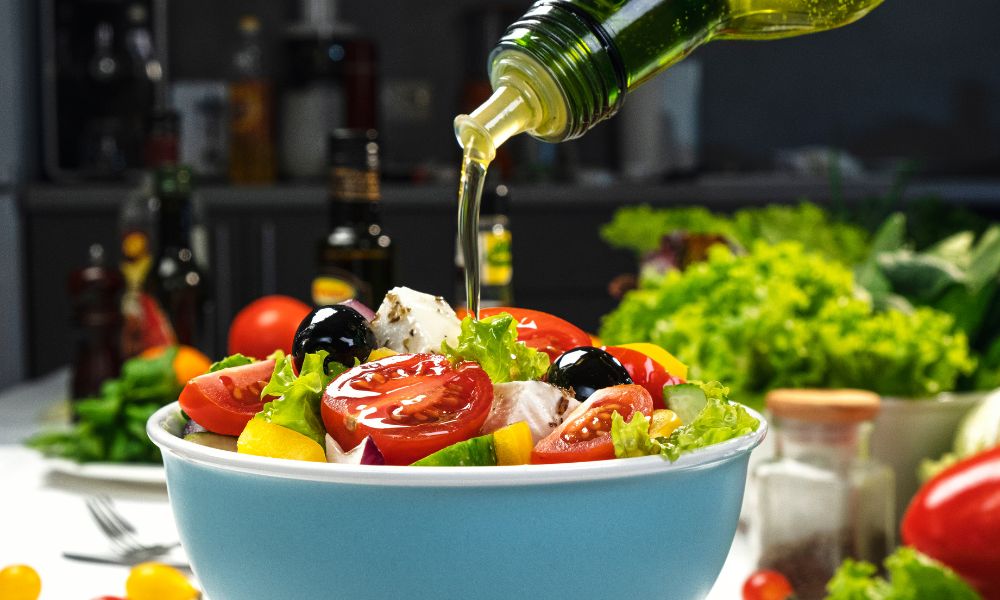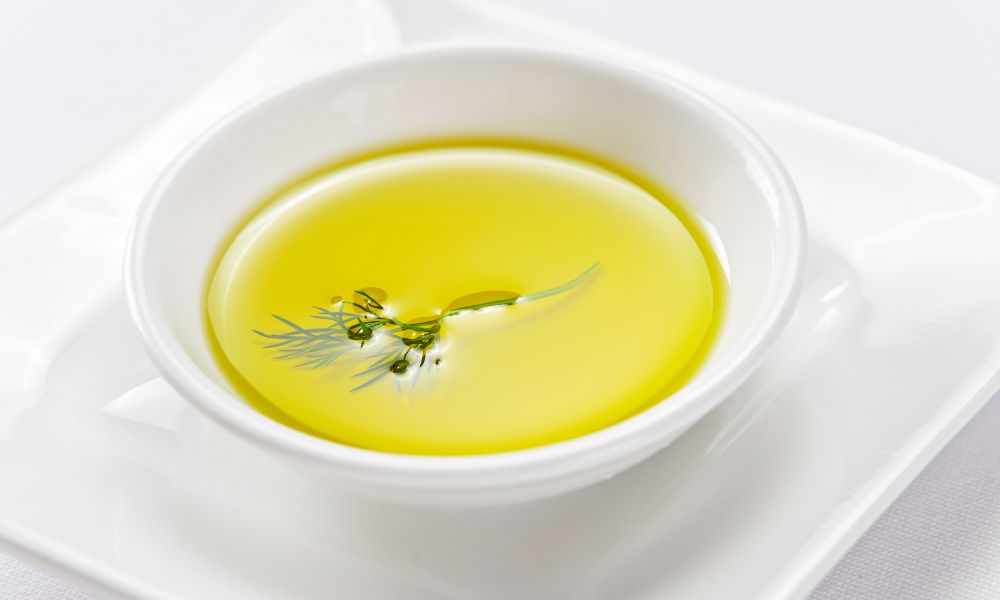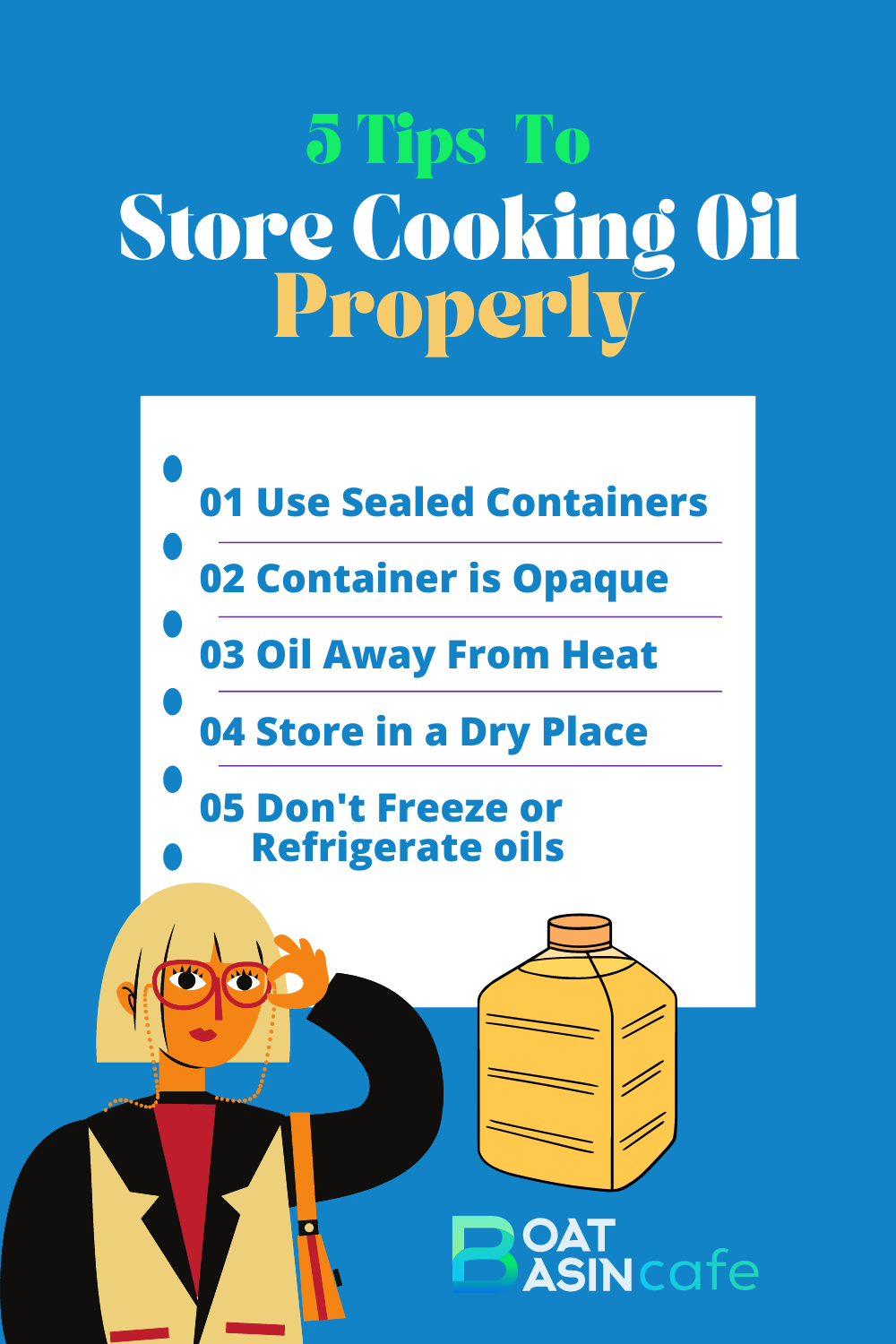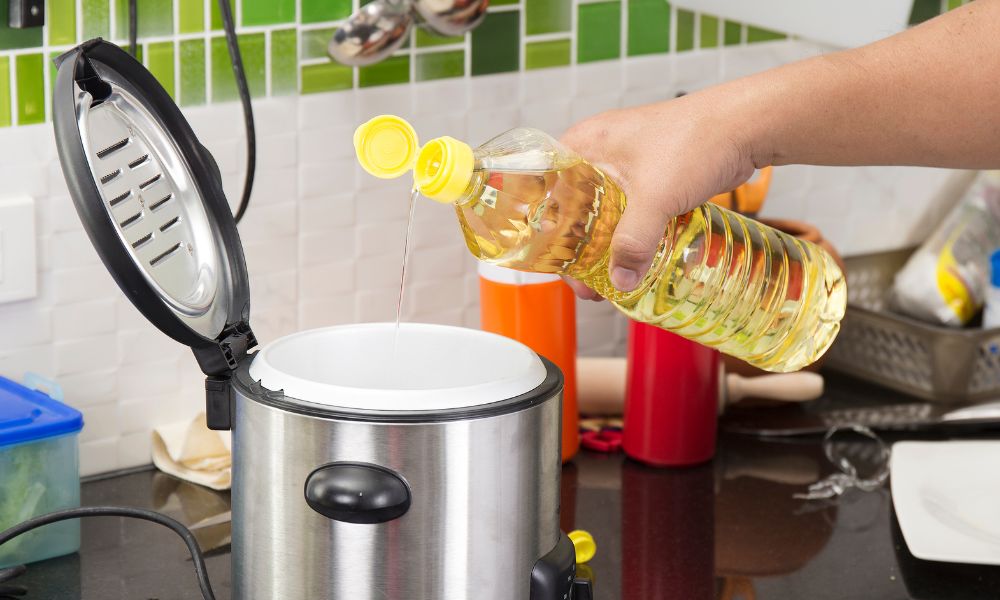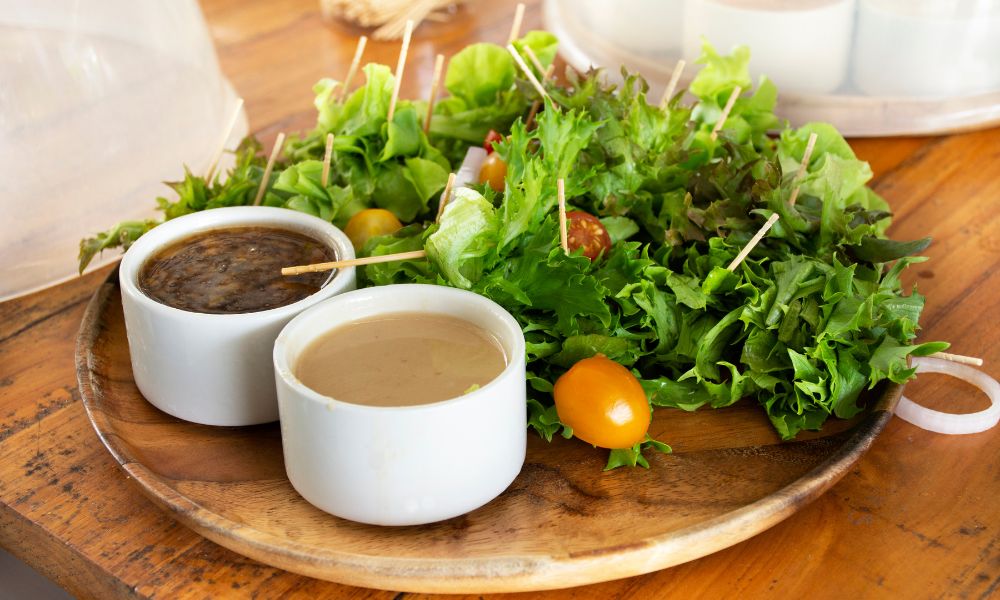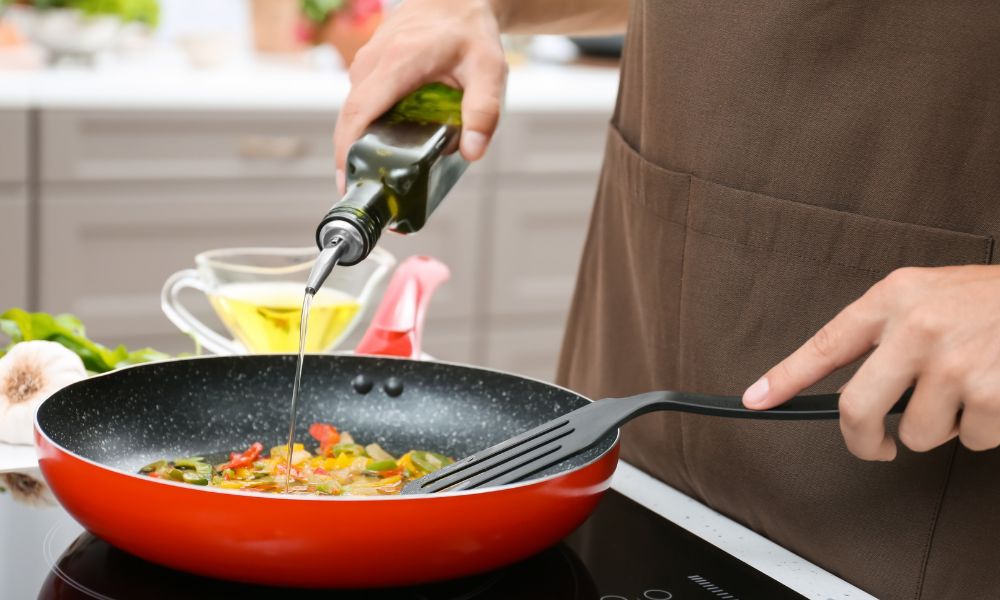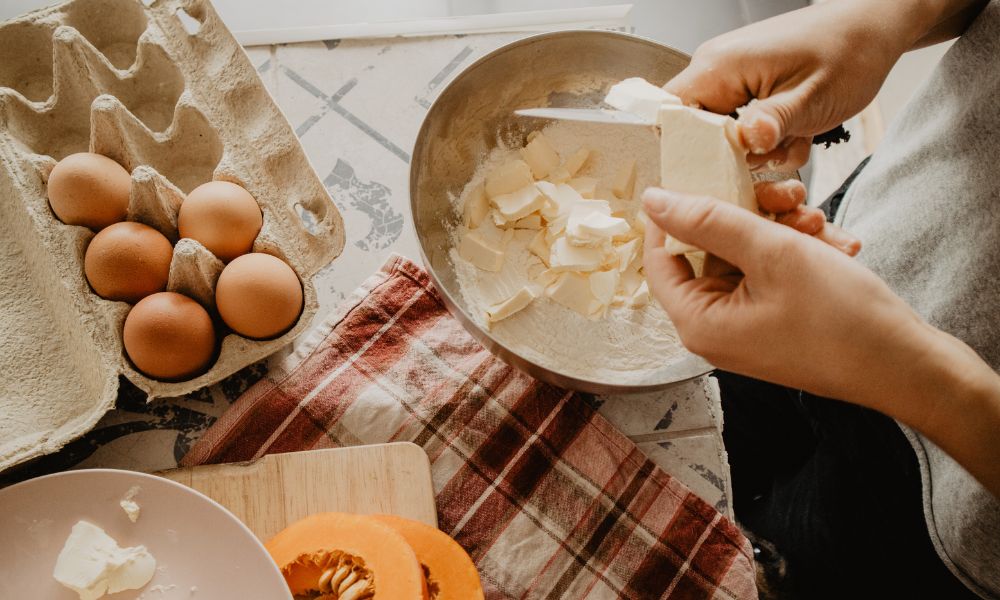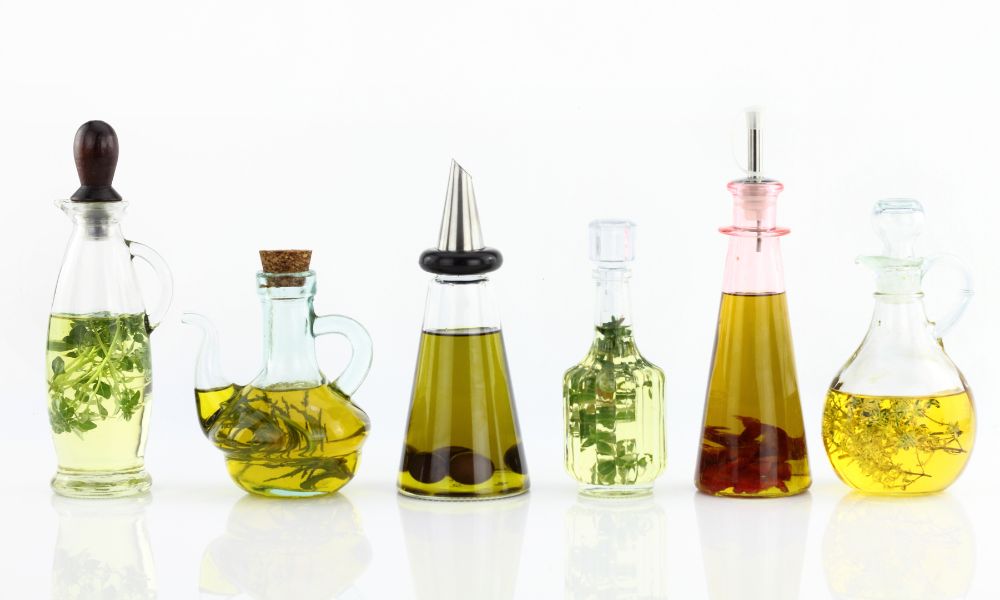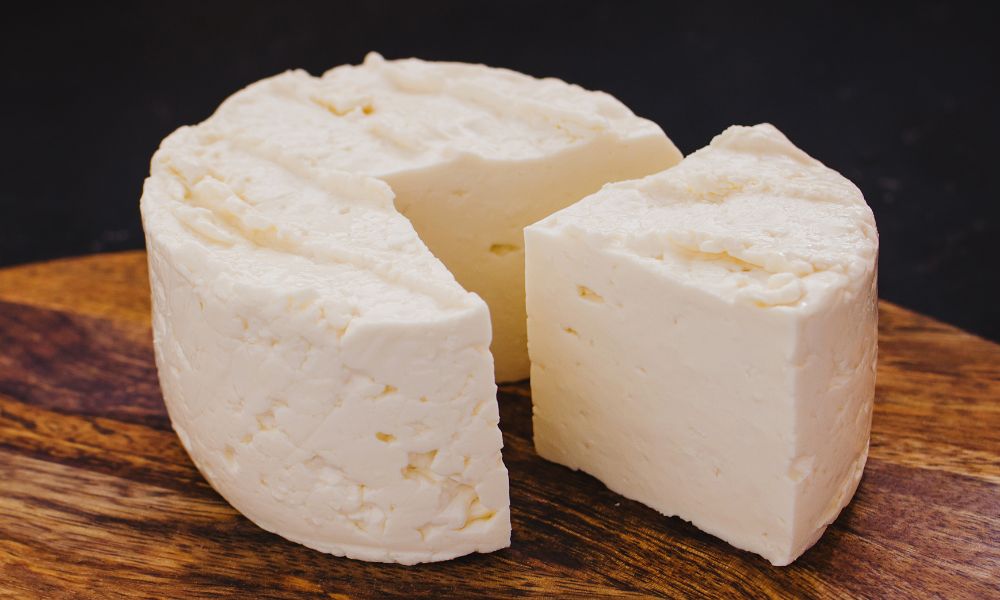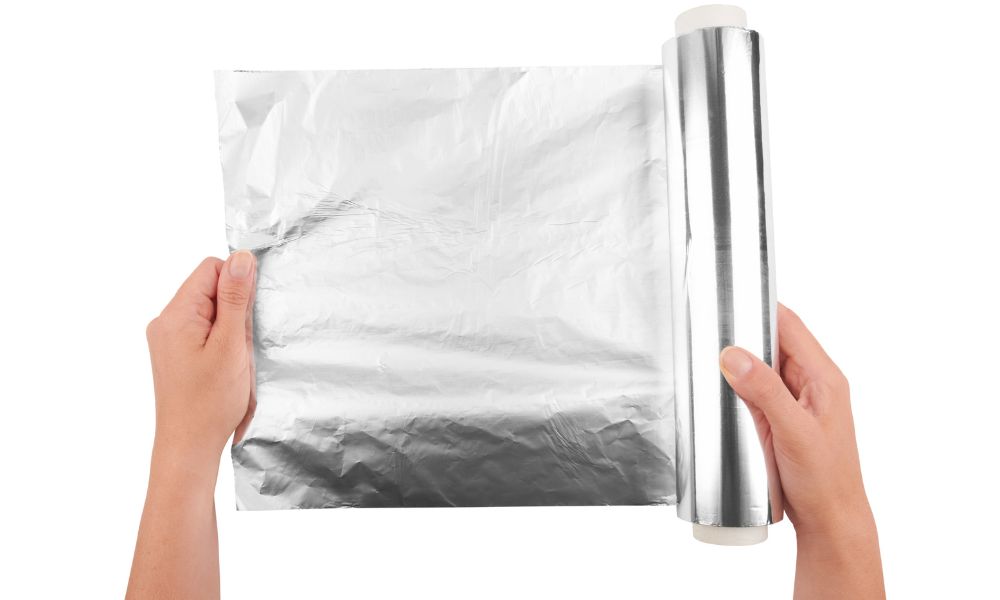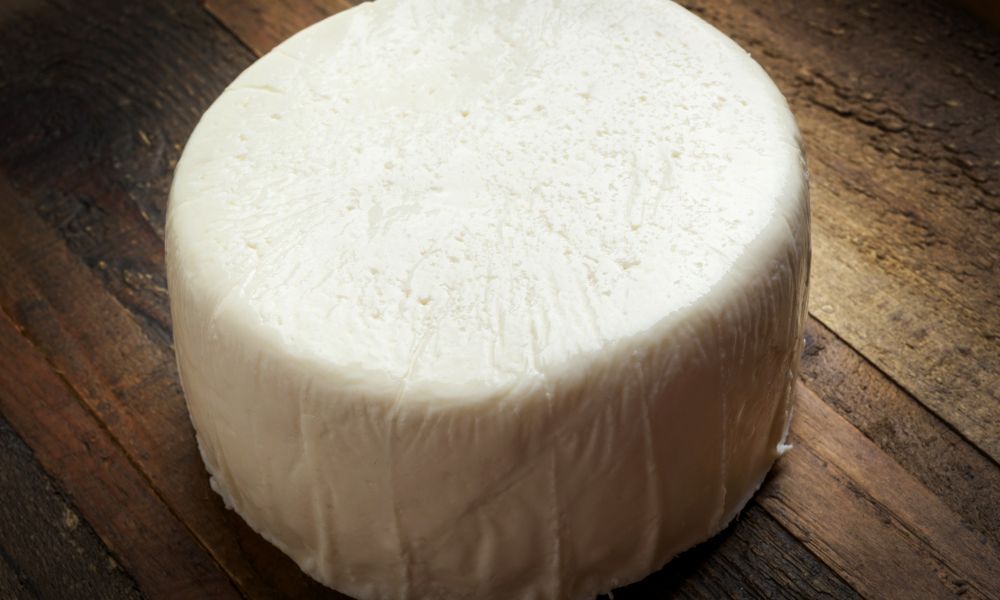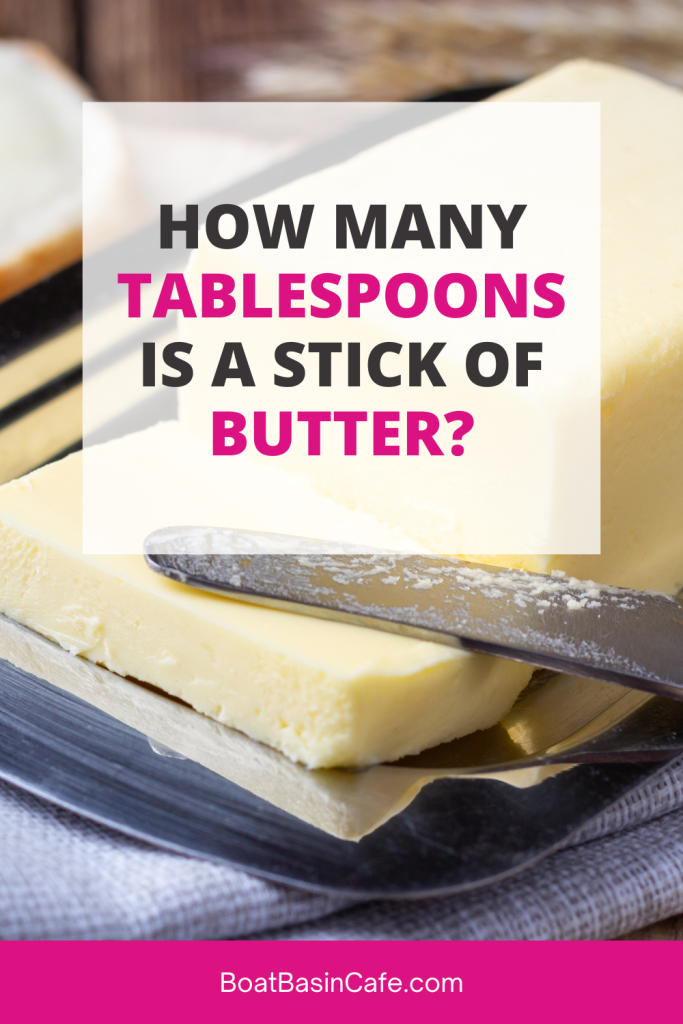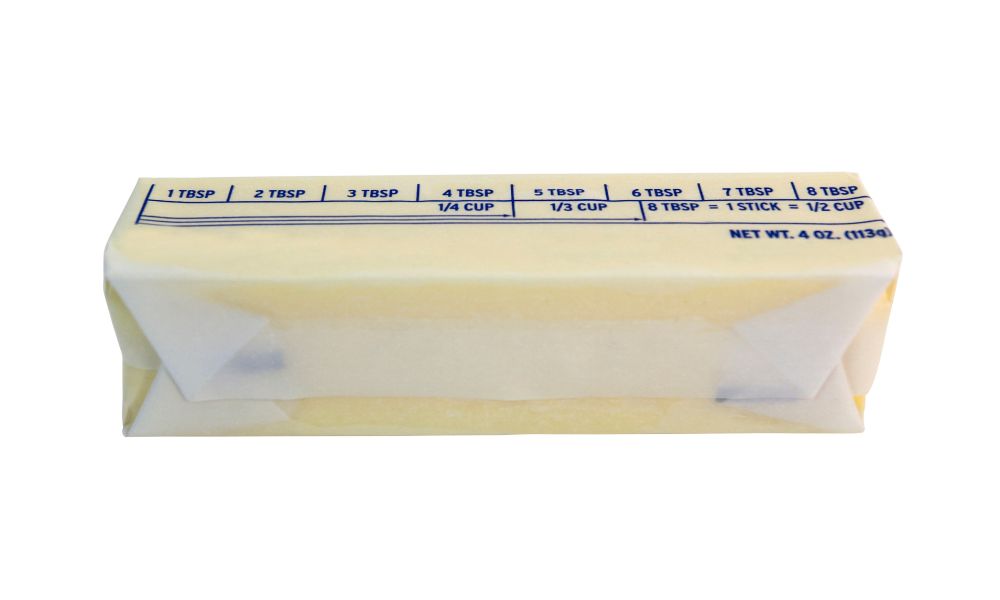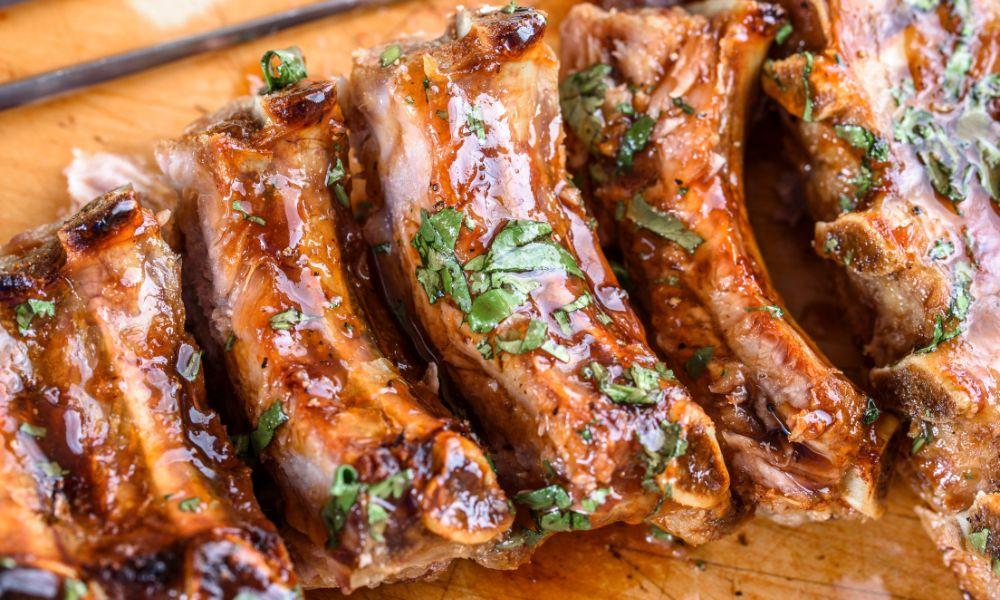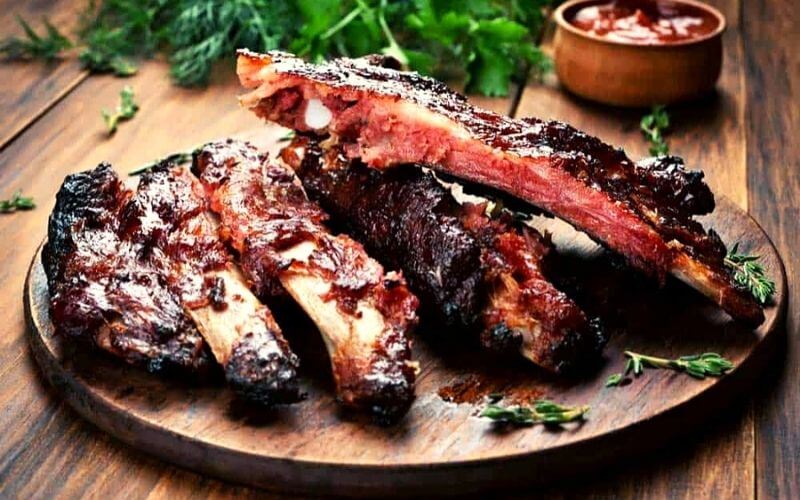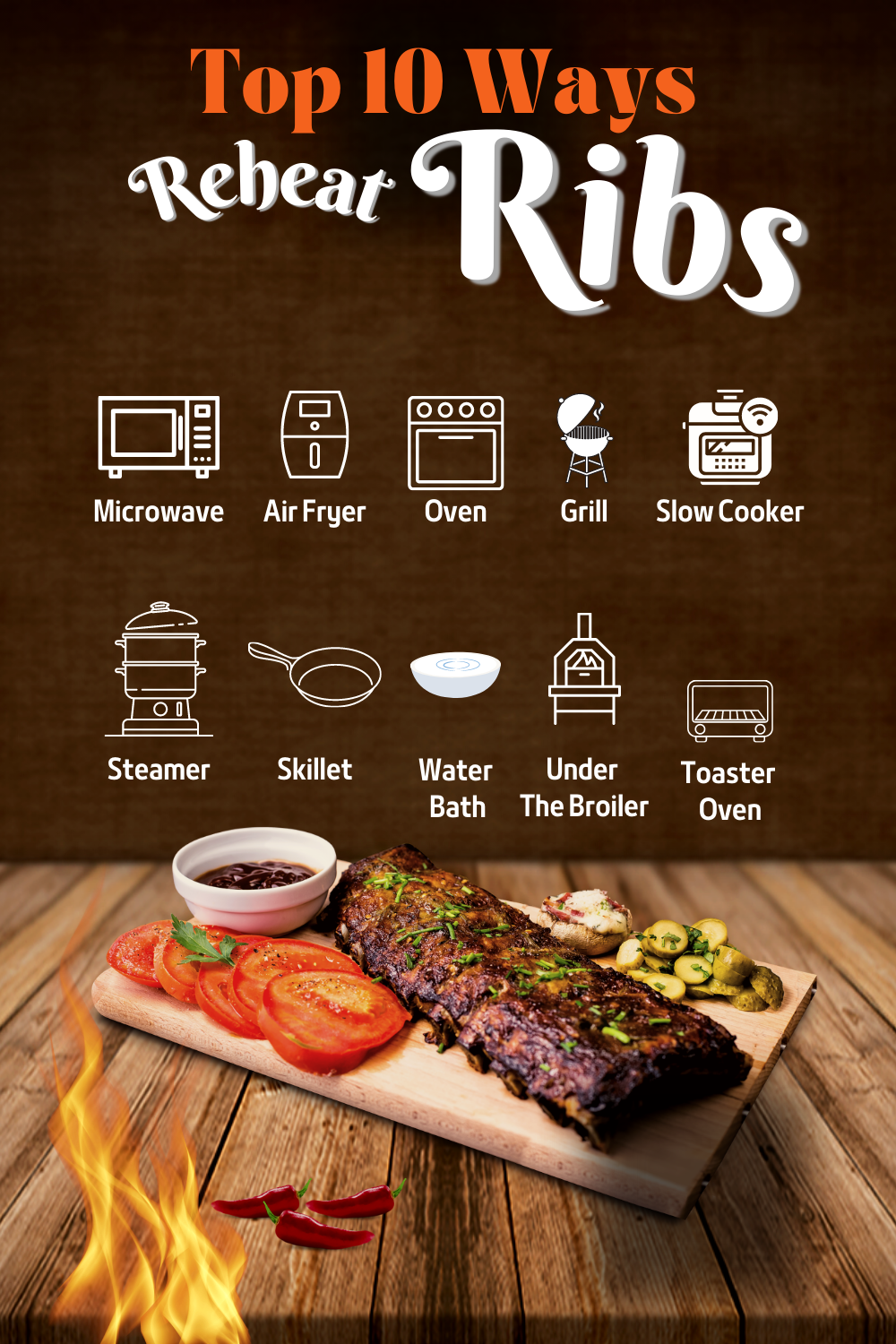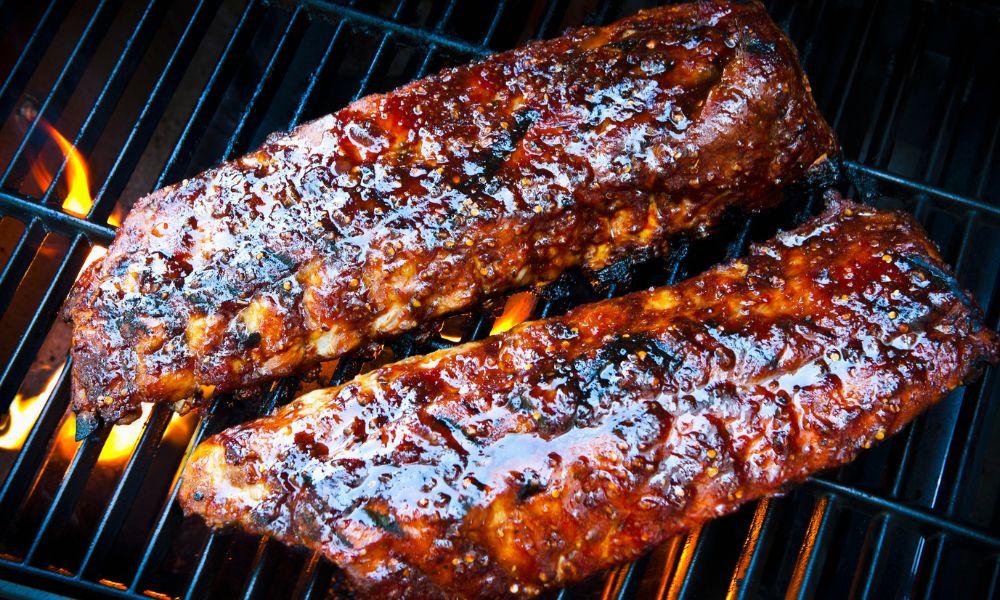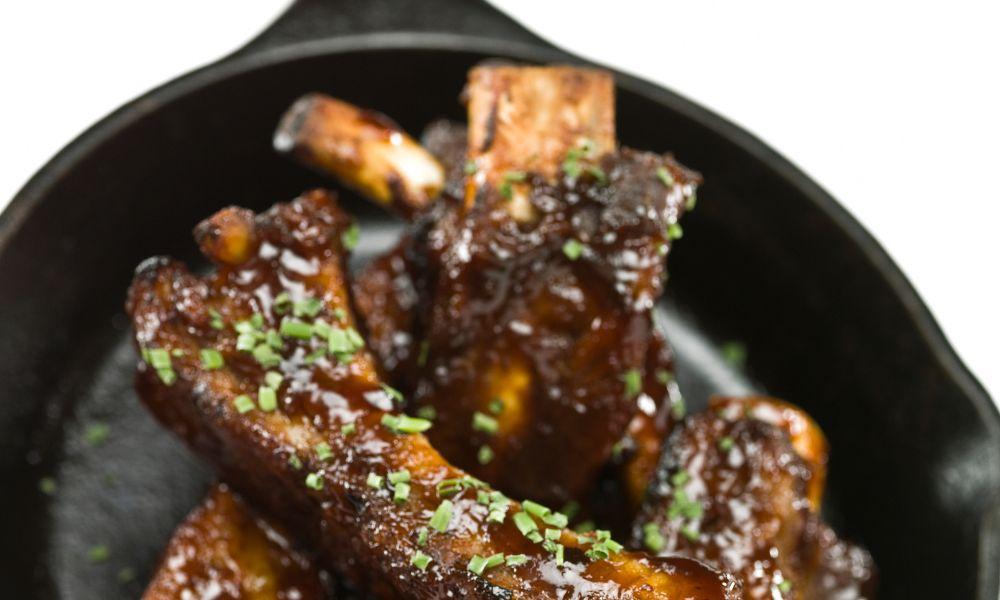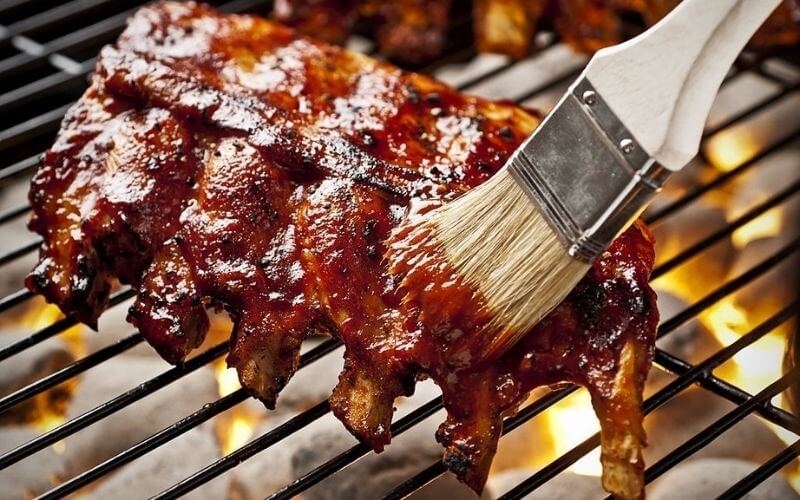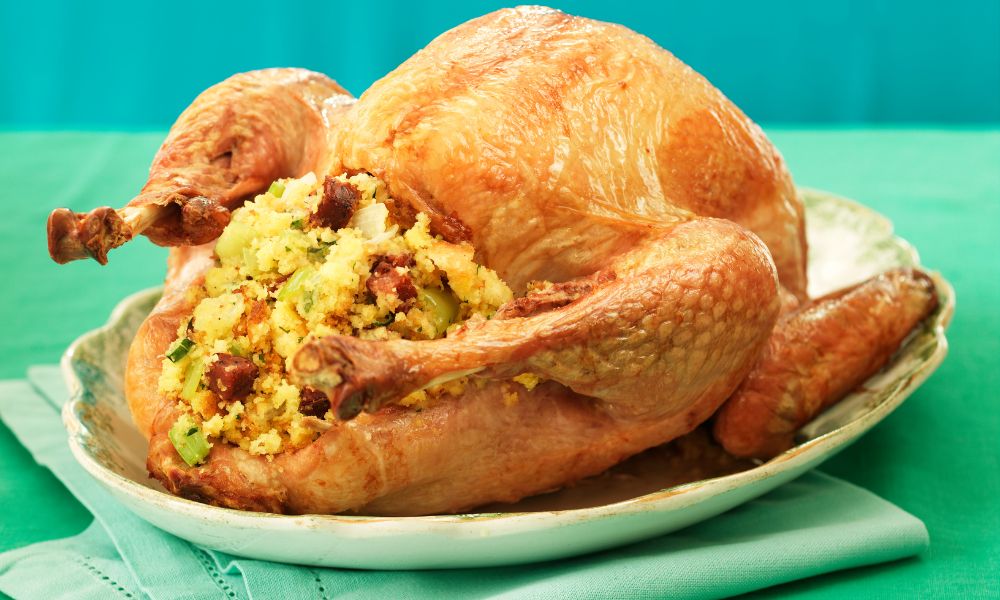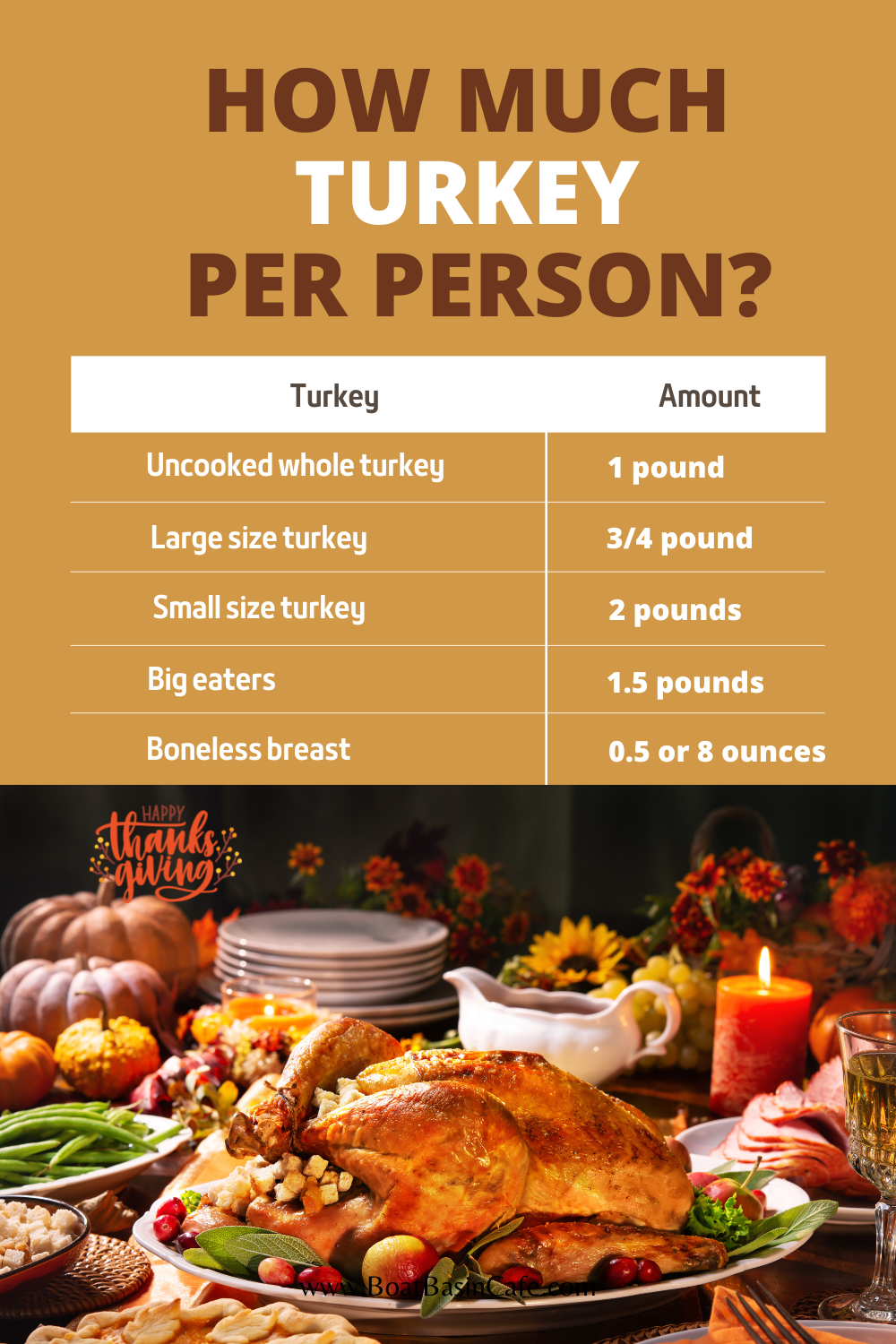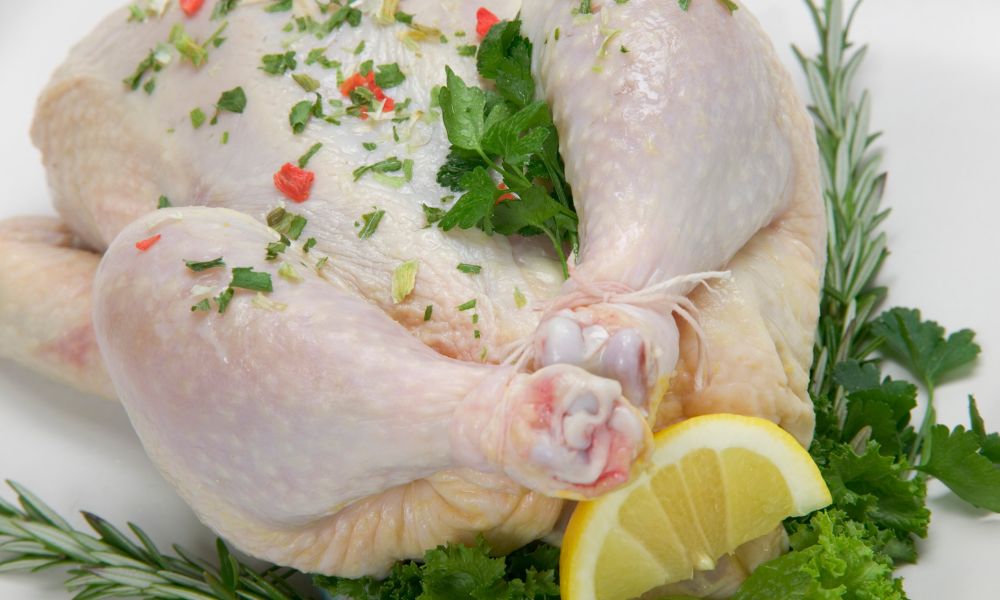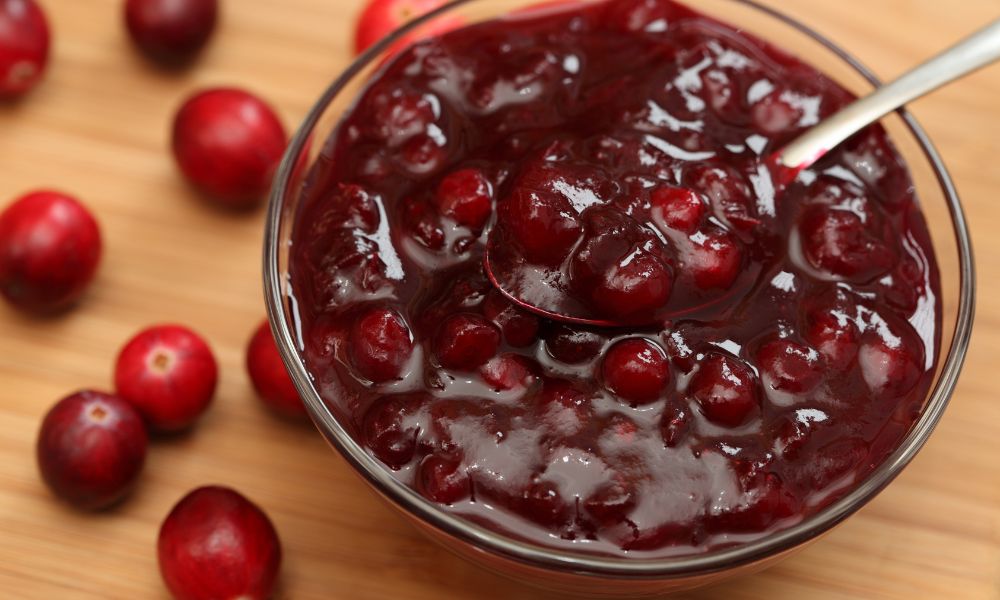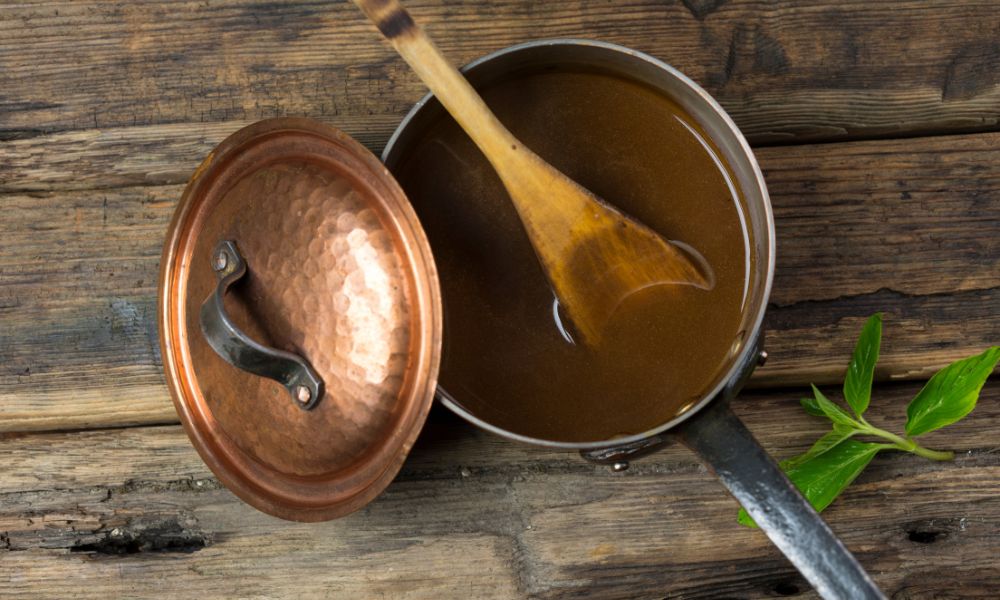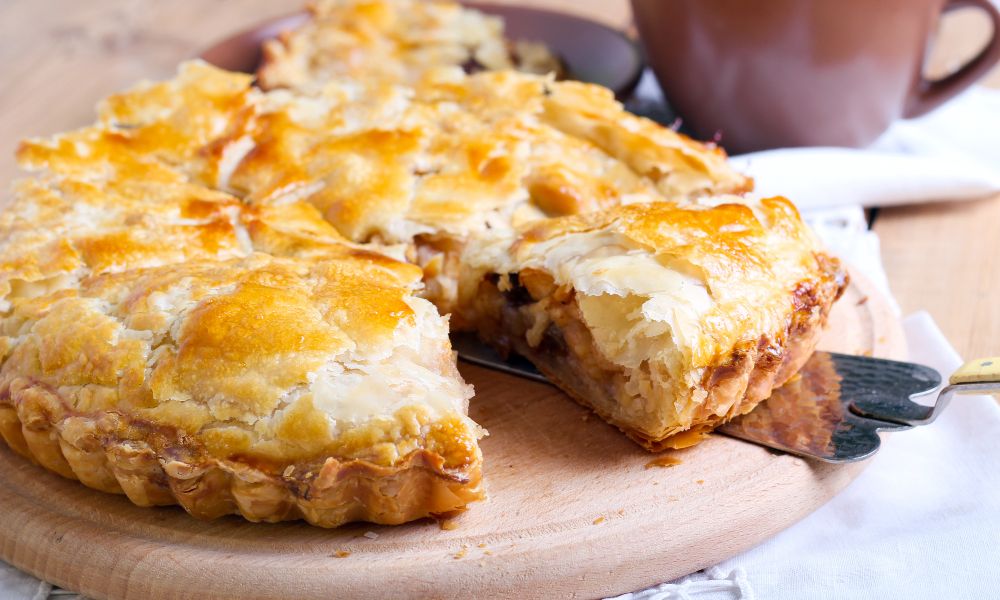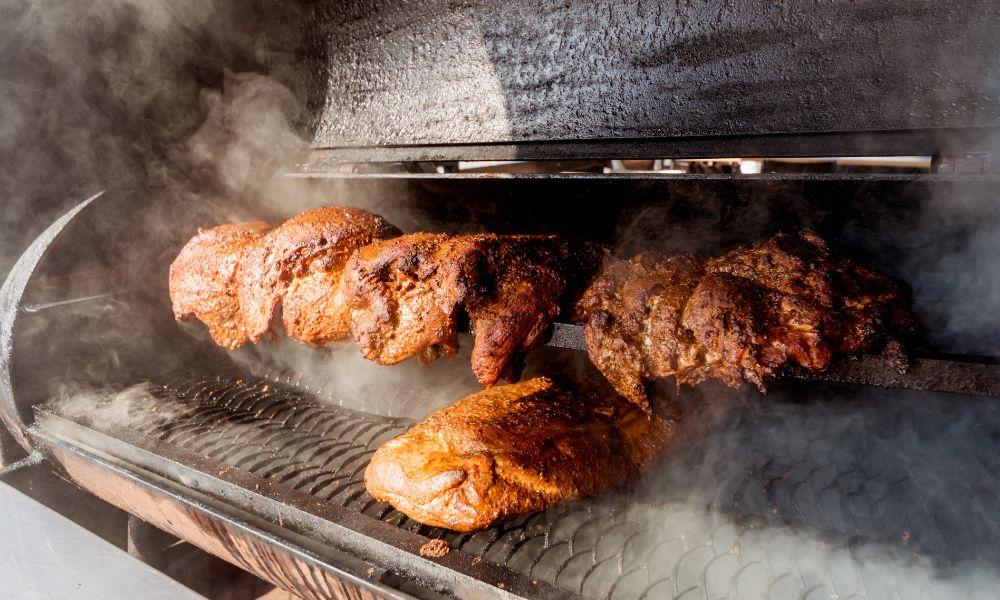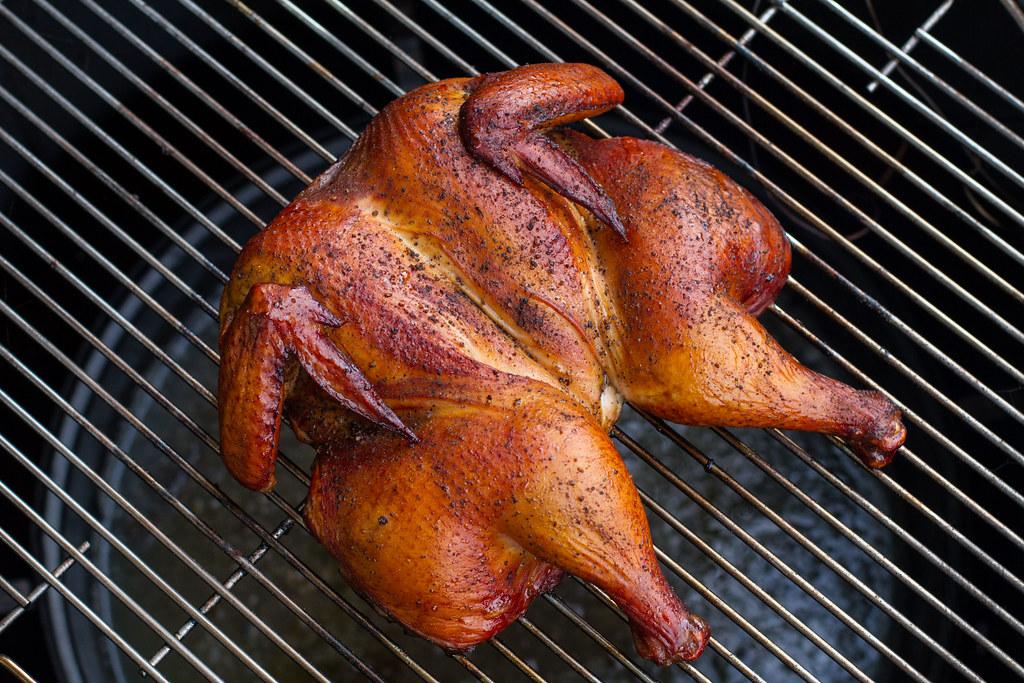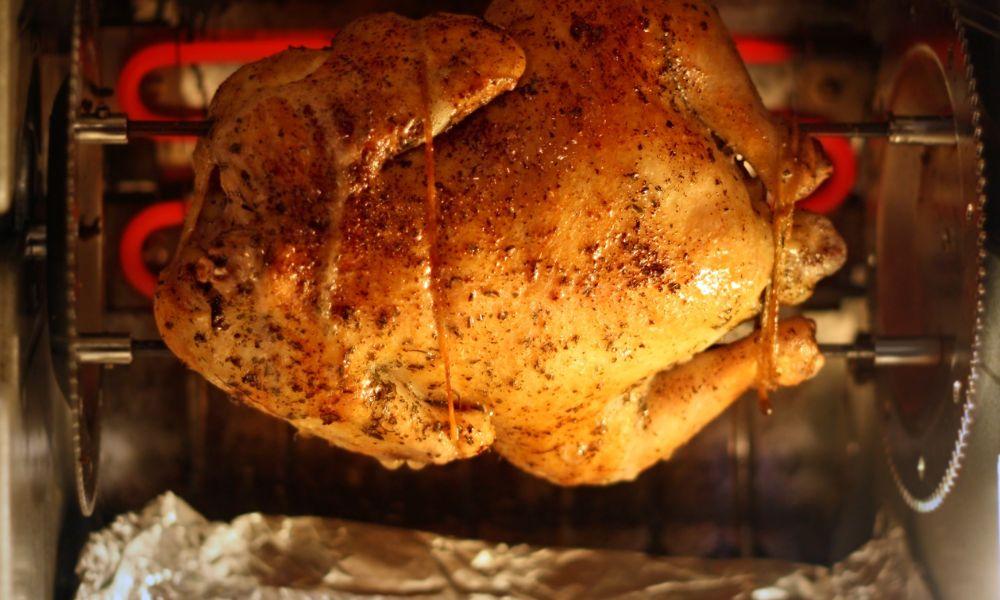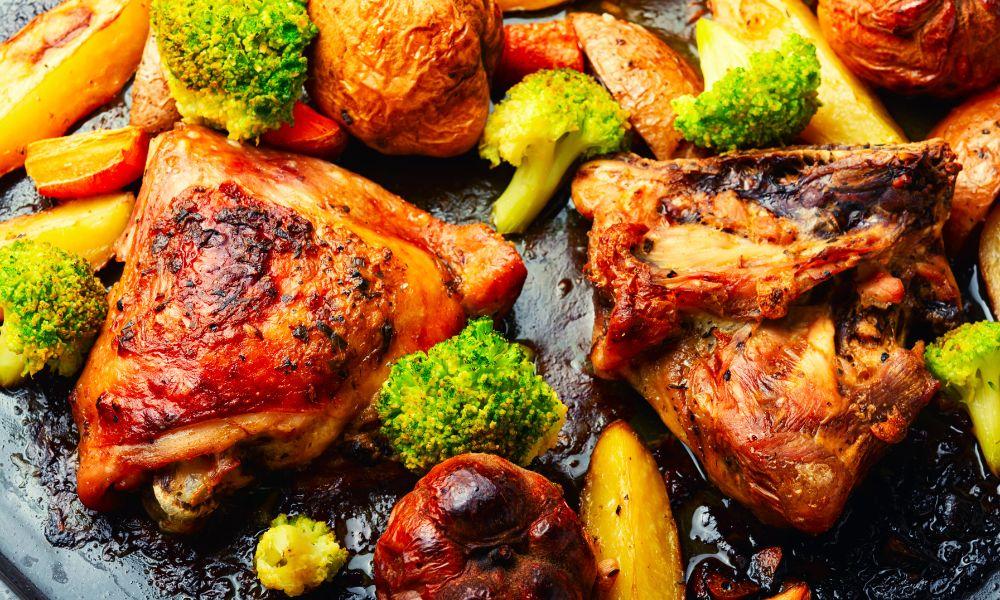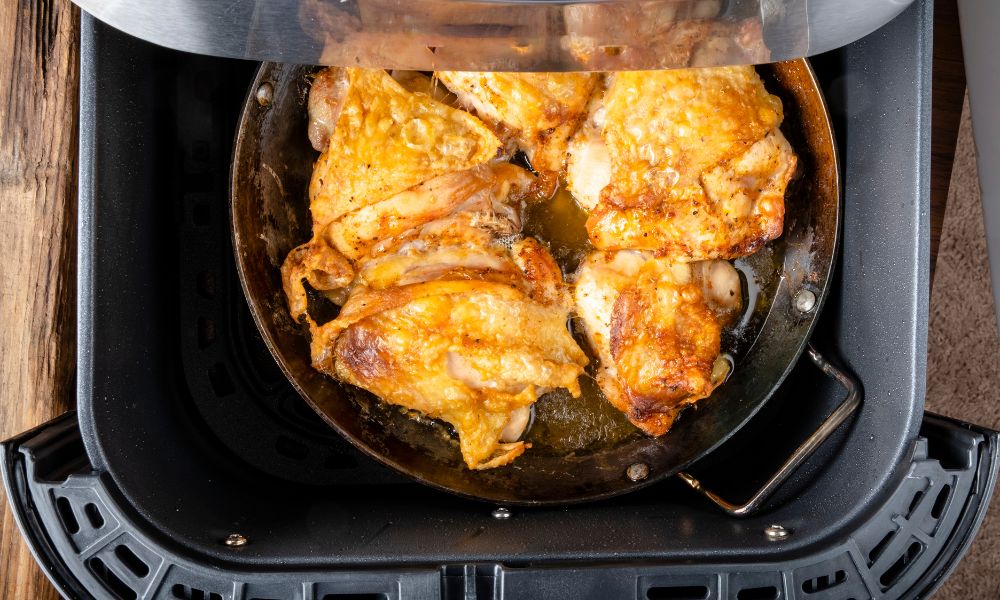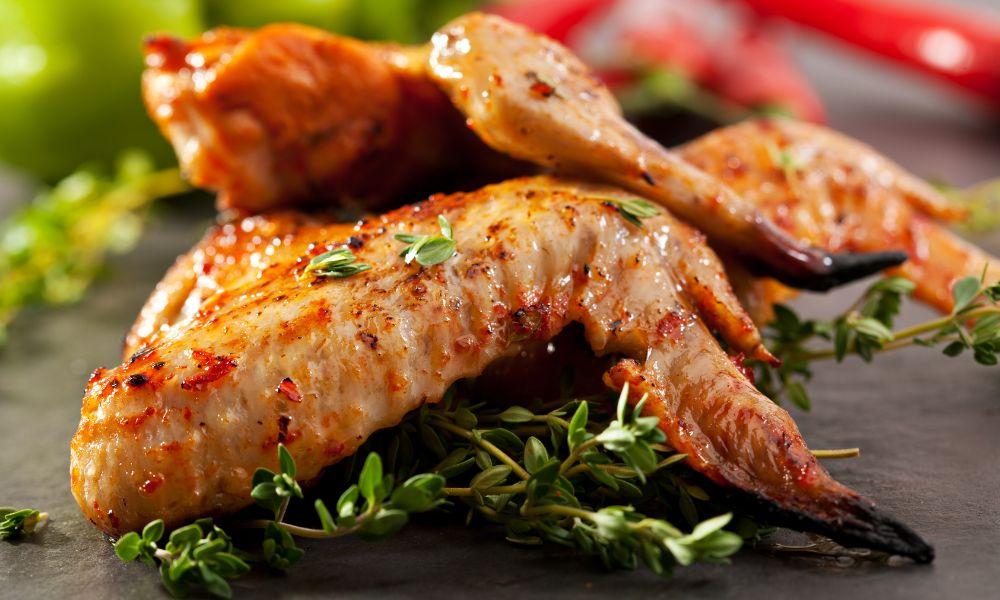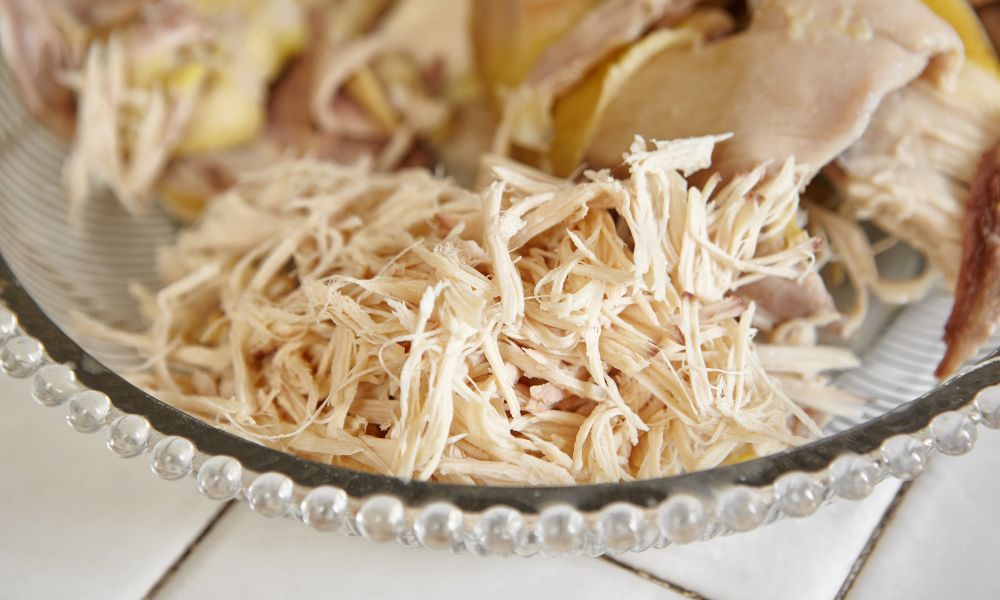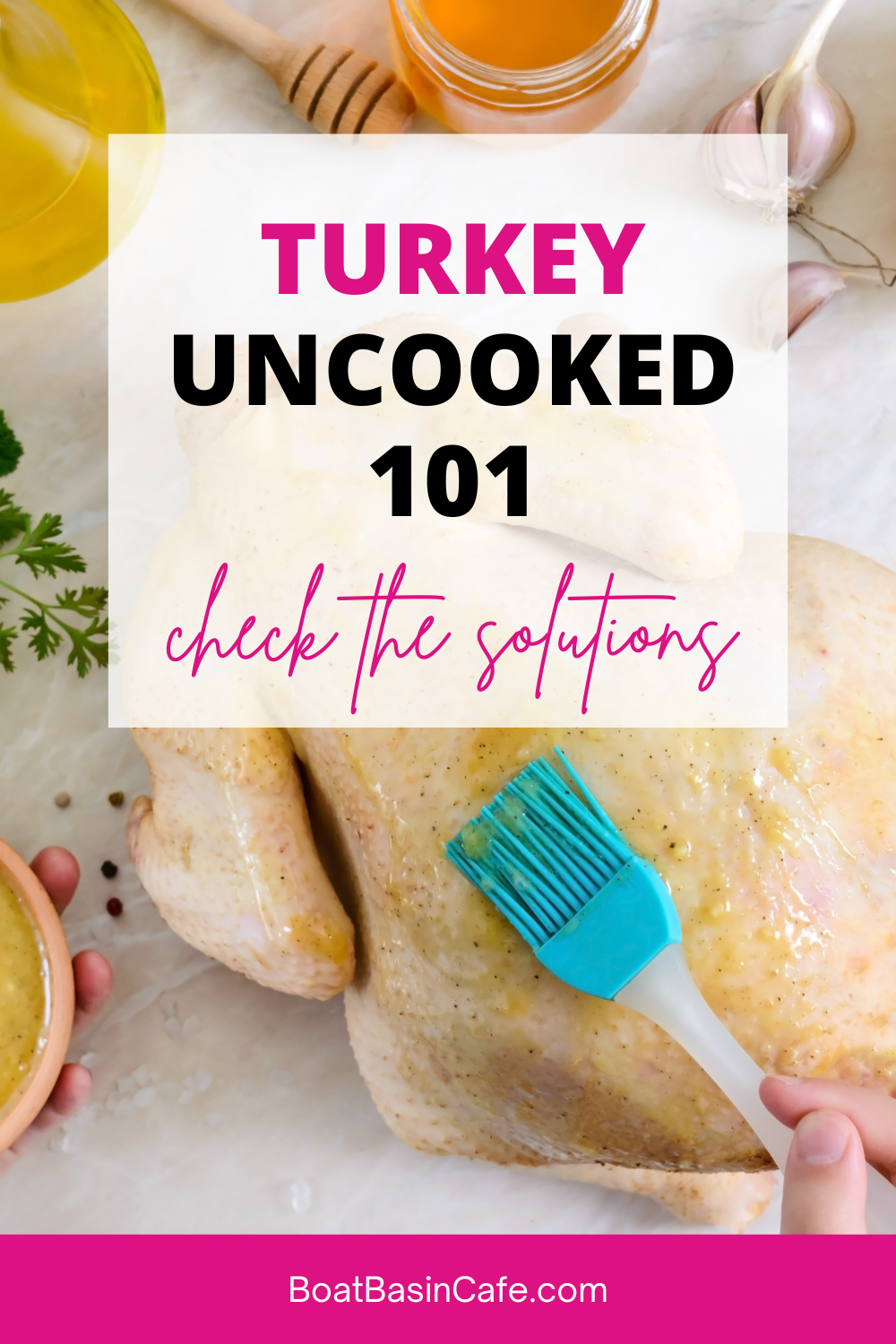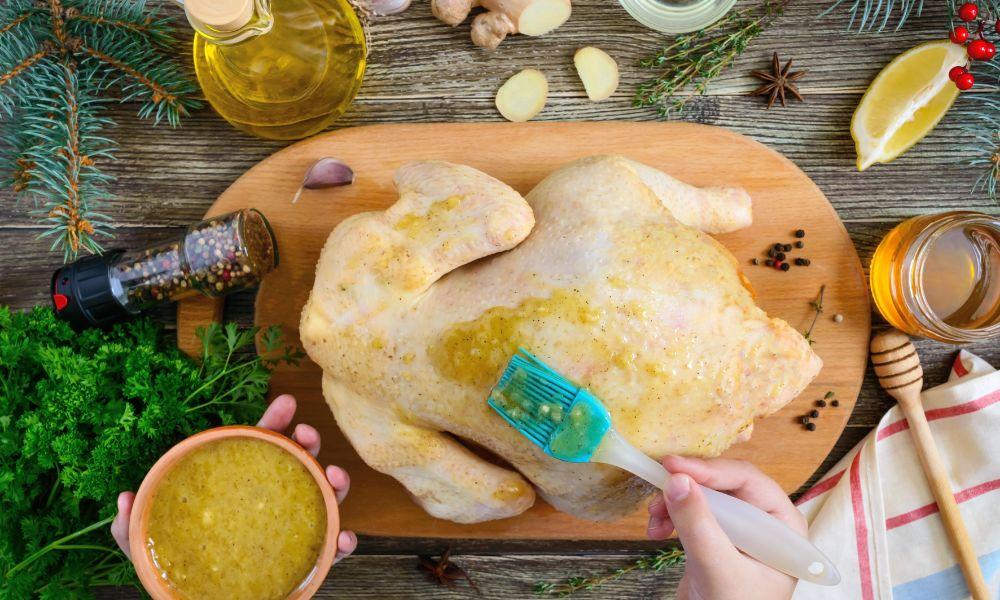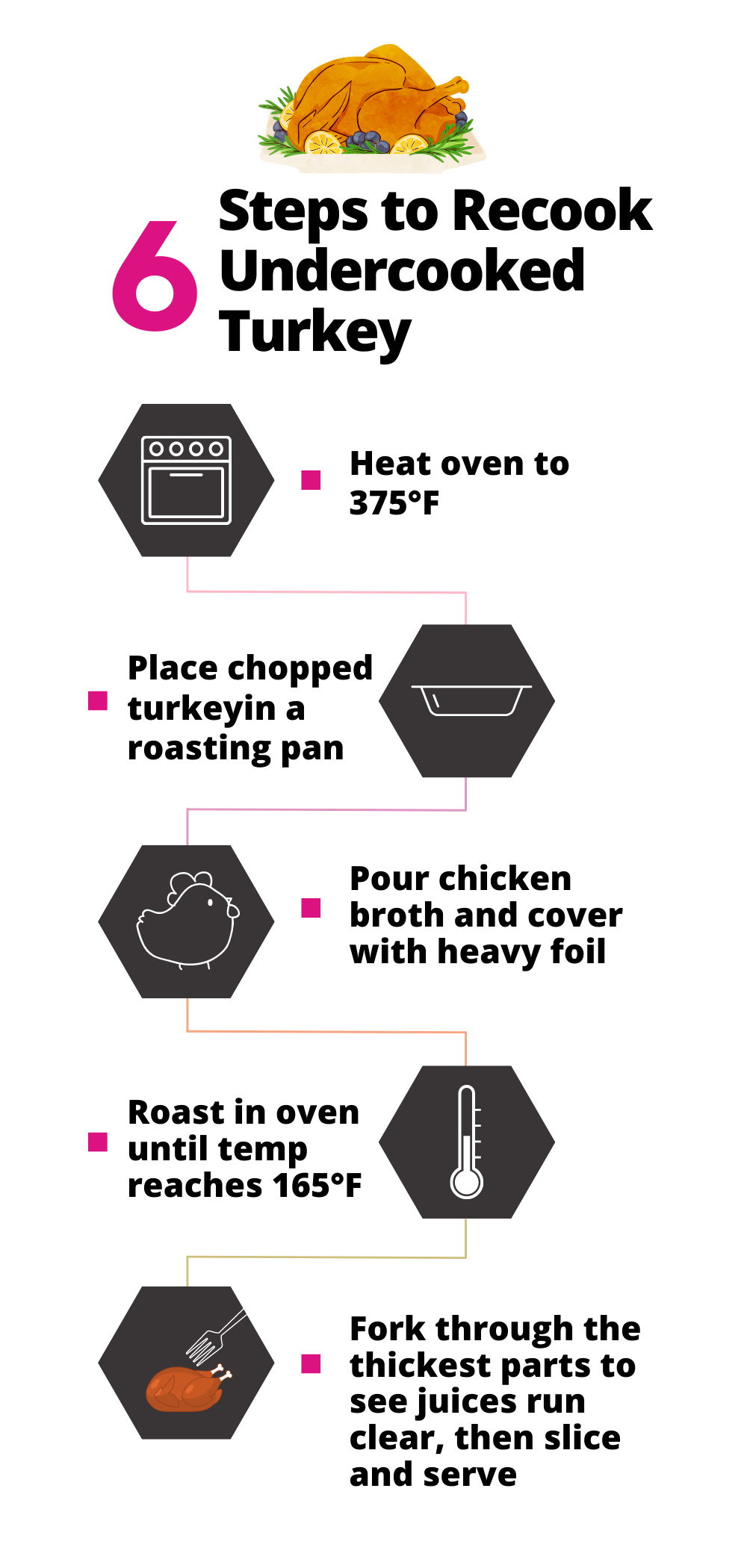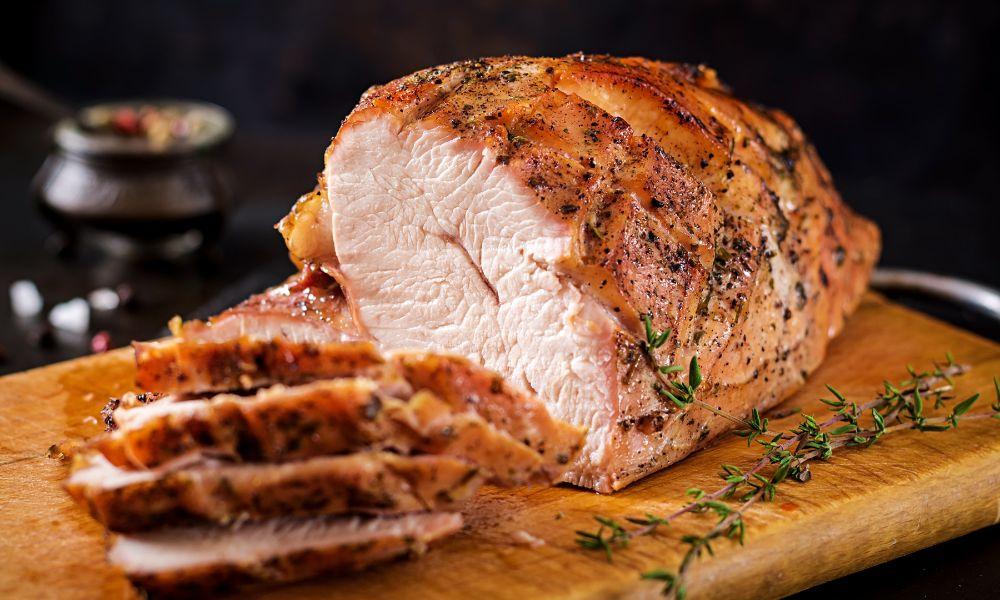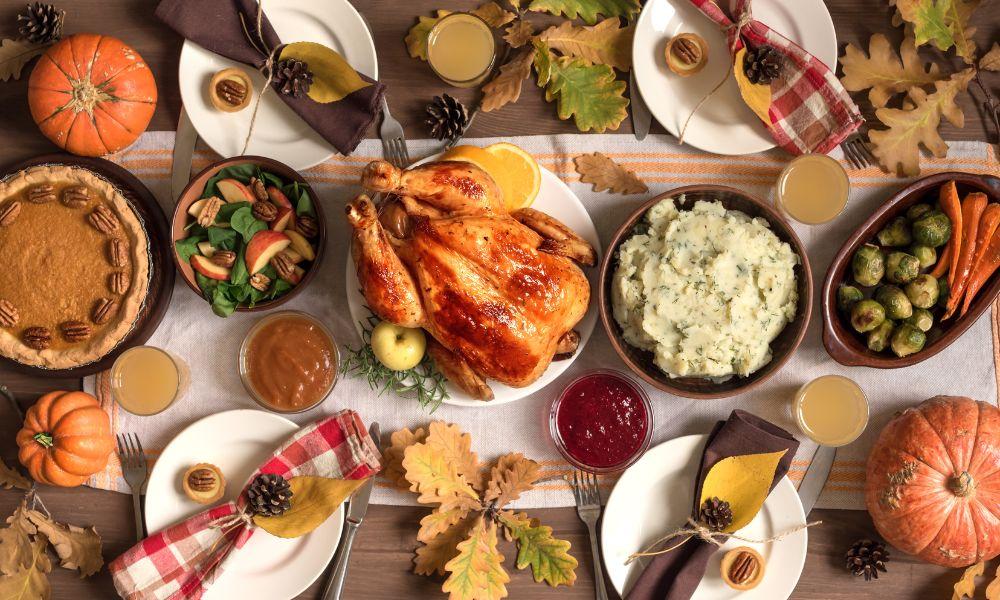A guide to Japanese sushi knife and the styles they come in along with their features and uses so that you can choose the best sushi knife.
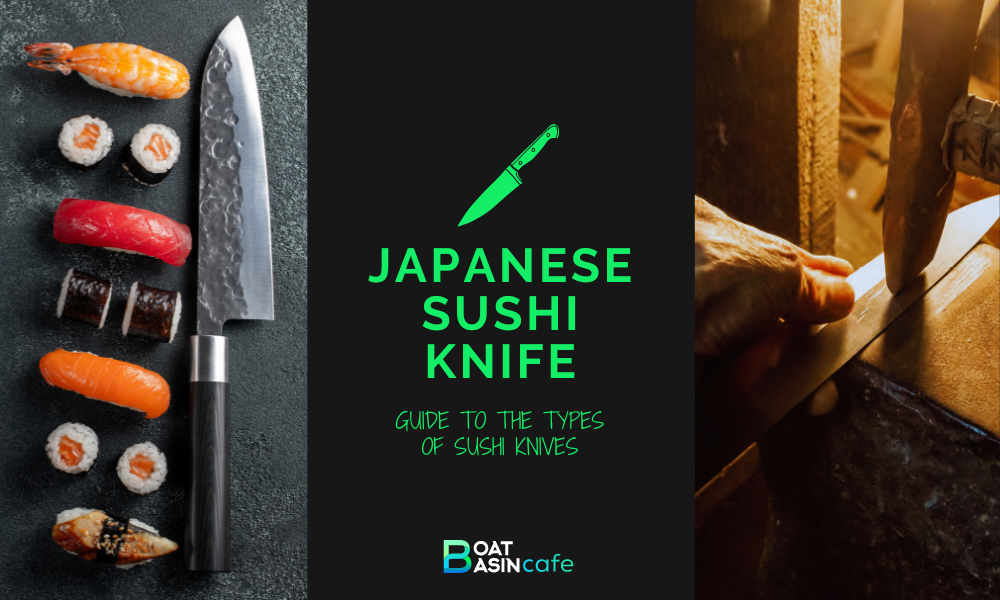
The Japanese sushi knife has been around for centuries, and its popularity is only increasing. Today, these knives are used by sushi chefs all over the world.
Japanese sushi and sashimi knives are designed specifically for slicing fish, vegetables, and other seafood.
The blades of these knives are usually long and thin with a pointed tip. This allows for precise slicing with less effort.
If you’re considering getting a sushi knife, it’s important to know what to look for.
In this guide, we’ll tell you everything you need to know about Japanese sushi knives.
Japanese Sushi Knife: A Brief History

The Japanese sushi knife has a long and interesting history.
The techniques used by Japanese knife makers to fashion these knives date back more than a thousand years.
Japanese handcrafting techniques for swords can be traced to the 14th century when swordsmiths made knives and samurai swords.
In the 1850s, Japan opened up to trading with other parts of the world and it is during these times that the swordsmiths made more knives and fewer swords or katana.
After the end of the Second World War, everyone was banned from carrying samurai swords, and thus, the transition to designing sushi knives was complete.
But even today, the sushi knife has the design of the samurai sword at its core – sleek, sharp, and precise.
In Japan, Seki City has been renowned for bladesmithing for 800 years.
From this region, one of the top blacksmithing families that produce world-class sushi knives is Fujiwara Kanefusa.
Another famous brand from the same area is Sakai Takayuki which belongs to a family of blacksmiths that have been in practice for hundreds of years.
A second-generation swordsmith from this region is Takeshi Saji with the “Traditional Master Craftsman” certificate under his belt.
Basic Terms Used For Japanese Sushi And Sashimi Knives
Before we delve further into the topic of sushi knives, we should discuss some basic terms used for knives for better understanding.
Blade
A blade is a thick piece of steel that can’t cut through ingredients unless its edge has been sharpened to do the job of cutting and chopping.
Bevel
The bevel is the ground angle and the shape of the blade’s edge.
A double-bevel or double-edged knife has angles on both sides, usually in a 50:50 ratio, giving the blade edge a V shape.
The ratio means that if one side of the blade edge has been ground at 11 degrees, the other side has also been honed at 11 degrees, bringing the total to 22 degrees.
Single-bevel or single-edged knives have a single angle on one side.
They have an asymmetrical edge that is ground to a thinner thickness with ratios of 70:30, 60:40, and 90:10.
Using the single-bevel knife takes special skills that the user needs to learn before using.

Knife Grinds
The different ways of creating the knife’s edge to perform different kinds of cuts and slices are known as knife grinds.
Tang
The part of the steel blade which extends to the handle of the sushi knife.
A full tang knife runs down the entire length of the knife while a half tang does not.
Wa-Handle
Traditional Japanese handles include the Wa-Handle.
They typically feel lighter overall and balance the blade forward as there is less steel inside the handle.
What Are The Main Parts Of A Sushi Knife?
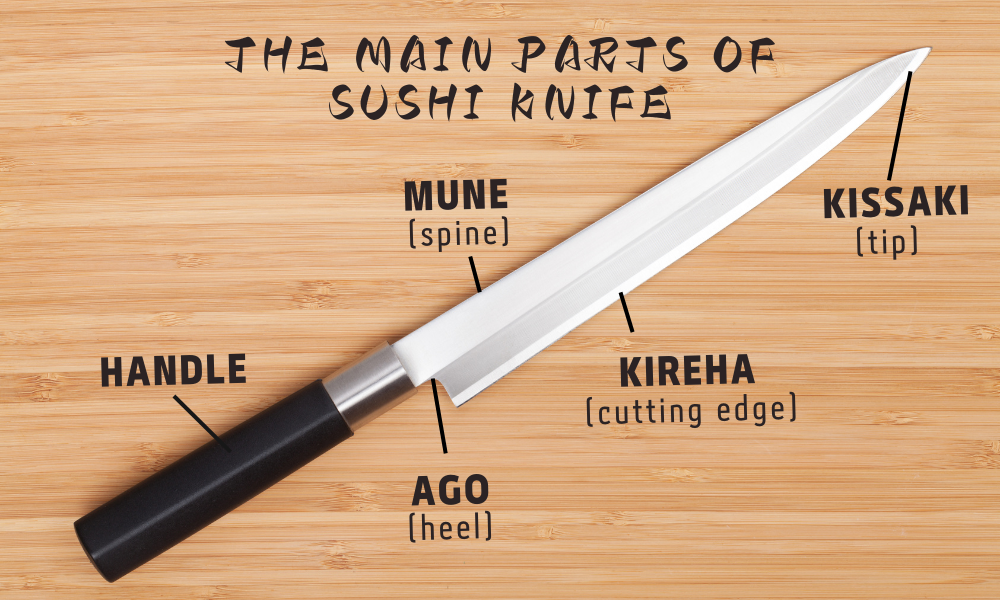
The main parts of the sushi knife are:
- Handle
- Kireha or cutting edge
- Kissaki or tip
- Mune or the spine
- Ago (the chin or heel)
The sushi knife’s cutting edge, which actually does the cutting, is like the basic sections of a kitchen knife.
Sushi knives are single-beveled, meaning that only one side of the blade is completely sharpened and the other has a slightly concave edge to facilitate cutting food.
The cutting edge of a blade is on the right side for a right-handed person and on the other side for a left-handed person.
While the spine of the blade is where you rest your index finger for a better hold, the tip, or kissaki, is the sharp, pointy portion of the sushi knife.
The area closest to the handle and the thickest section of the blade is called the chin or heel.
When cutting tough items, the chin or heel prevents any damage.
With the wooden handle, you can control the knife movements easily as it gives you a good grip.
Chef’s Knife: How Is It Different From Traditional Japanese Sushi Knife?
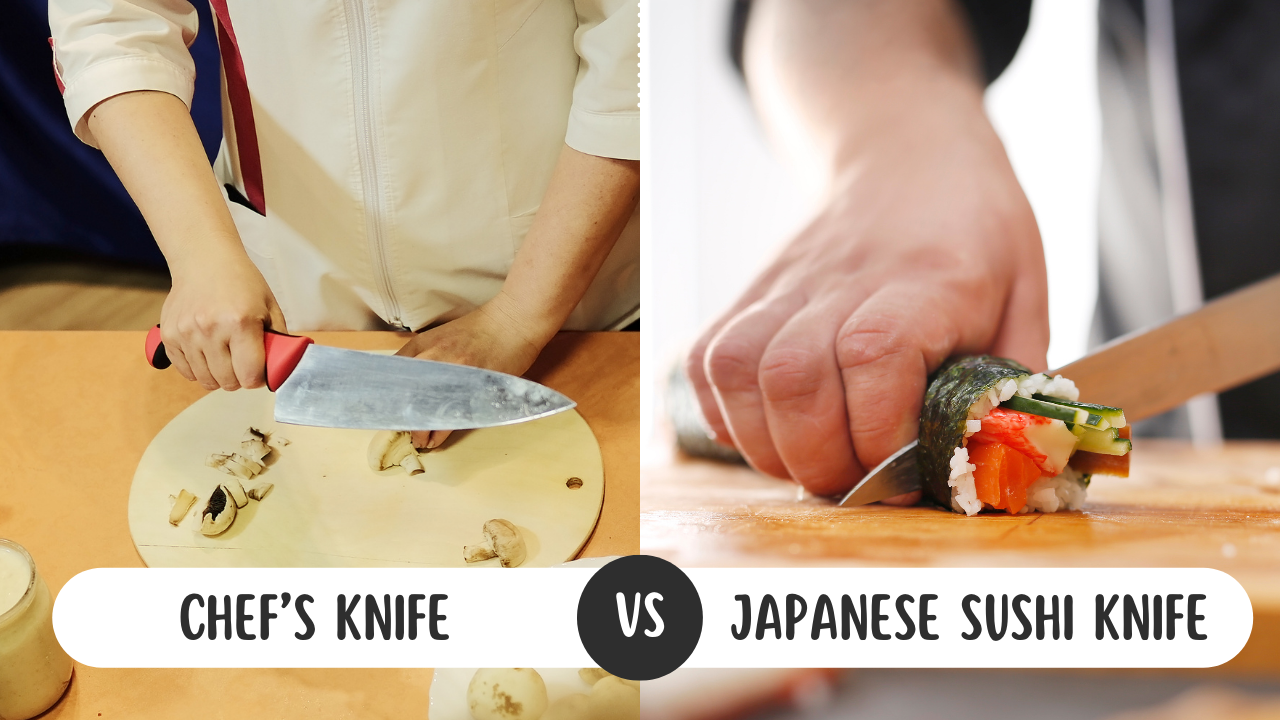
The regular chef’s knife you have at home is different in a few aspects from the traditional Japanese sushi knife.
Bevel
The bevel or the angle of the blade’s edge is the key distinction between traditional Japanese sushi knives and blades in the chef’s knives used in the West.
The bevel in the chef’s knife is sharpened at an angle on both sides in a 50:50 ratio, creating a V shape, and therefore, called a double-edged knife.
This can be used by both right- and left-handed users.
In a Japanese sushi knife, the blade is sharpened at an angle on only one side, creating a chisel-like shape.
The ratios, as mentioned earlier, are 70:30, 60:40, and 90:10.
The sushi knife is usually honed on the right side, making it perfect for right-handed users.
For left-handed users who need one that has been sharpened on the left side, they need to order a special one like this.
💡Japanese sushi knives are single beveled, but chef’s knives made in the West are double beveled.
Shape Of The Blade
The shape of the blade is another point of difference.
While the typical Japanese sushi knife has a straight blade, the chef’s knife in the Western style is usually curved along the blade.
Angle Of The Bevel
The Western chef’s knife has the bevel at an angle between 20 to 30 degrees.
The higher the angle, the better it is to chop or cut thick vegetables and meat.
On the other hand, the bevel angle is quite low in the sushi knife – a maximum of 5 degrees.
When slicing delicate fish, shellfish, meat, and vegetables, this creates an extremely fine or sharp edge.
Sharpness Of The Cutting Edge
Japanese sushi knife that is single-beveled is extremely sharp.
This is because only one side needs to be sharpened, making it simpler to cut an angle much smaller and sharper.
This makes it possible to slice, dice, and cut precisely—a necessary skill in Japanese cuisine, especially when making sushi.
Additionally, a single bevel knife enables the cook to create long, uninterrupted cuts that resemble wafers, which is crucial when preparing several Japanese veggies (for example: peeling daikon).
Whereas, the chef’s knife doesn’t have a very sharp cutting edge.
That’s because it is used for cutting tougher meat and vegetables like pumpkin.
Use Case
The use of a chef’s knife is to cut through tough ingredients like bones and meat.
But the sushi knife is meant to use for more delicate slicing of fish, meat, and vegetables.
Using a sushi knife to cut through dense ingredients will not only ruin the blade of the knife but will also spoil the structural integrity of the meat or fish and spoil their texture.
Types Of Sushi Knives
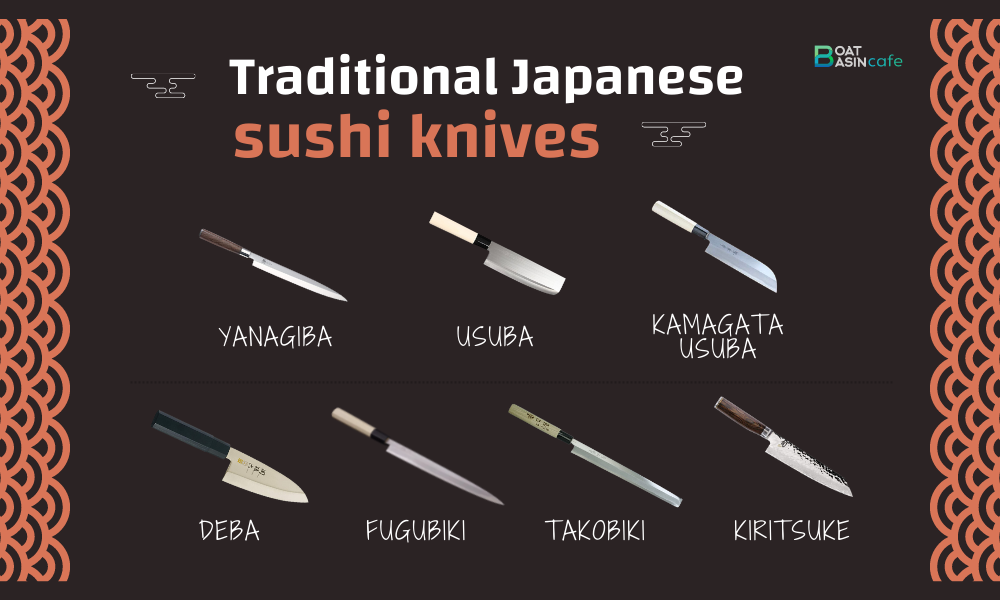
There are different types of sushi knives depending on the specific purpose for which they are used.
Sushi knife types depend on the blade length, blade material, and handle material.
There are two broad categories of sushi knives with different styles under each.
One is the traditional Japanese knife that is sharpened on one side of the blade.
The second one refers to the Western-style sushi knife that is sharpened on both sides of the blade and has a Japanese influence in the design.
This influence can be seen in the angle of the blade.
Instead of the typical chef’s knife that has a 50:50 ratio to give the blade a V shape, the ratios are such to give the blade an asymmetrical shape – 70:30, 60:40, or 90:10.
The following are traditional Japanese sushi knives:
- Yanagiba (AKA Shobu)
- Usuba
- Kamagata Usuba
- Deba
- Fugubiki
- Takobiki
- Kiritsuke
Yanagiba (AKA Shobu)
The Japanese word for Yanagiba is “willow leaf blade.”
With its origins in the Kansai region, it is a typical sushi knife made in Japan that is between 210 and 360 millimeters (8 5/16 – 14 3/16 inches) long.
This knife is commonly referred to as the “Shobu” by people from the Kansai region since it means “iris leaf.”
Due to its resemblance to the Japanese iris plant, which has spear-shaped leaves, this name was given.
Features
- A thin and long blade with a pointed tip is required to get thin slices for boneless fish filets.
- Single-beveled on the right side with a concave edge on the left side so that the food does not stick to the blade but falls off smoothly.
- The unique shape of the blade can cut through the delicate skin of fish without spoiling the texture.
- Either D-shaped handles or Wa-handles that are oval or octagonal.
Purpose
Yanagiba knife uses include making clean slices of raw fish for sushi and sashimi dishes as well as for making fish filets.
The proper techniques required to make the most of using the Yanagiba knife are the following:
- Usuzukuri
This technique translates to “fine cuts.” It is used by sushi chefs for cutting raw fish into incredibly thin pieces.
By slicing the fish in this way, cooks can highlight how translucent white fish is and accentuate its springy feel.
- Hirazukuri
To create long, thin slices of fish, chefs pull-cut perpendicularly across the body of the fish.
Chefs prepare fatty fish, such as salmon and tuna, in this manner.
- Sogizukuri
Pull-cutting in the direction of the fish’s skin or scales at an angle of roughly 45 degrees. Slices produced using this method are both long and thick.
Sushi is more enticing and satisfying to eat when the salmon is cut in this manner.
Usuba
With a thin blade and a sharp cutting edge, the Usuba is a rectangular knife with a straight edge that hails from the Kanto.
It’s ideal for chefs who want to glide through slicing jobs easily and precisely.
Features
- A long, flat, straight-edged blade comes into contact with the cutting surface, it is perfect for cutting nori sheets and veggies.
- The thin blade makes it easy to maneuver the knife, making it ideal for fileting fish, chopping components, and cutting veggies with precision into smaller pieces.
Sushi chefs can put pressure on the ingredients without damaging the food structure.
- A Wa-handle that’s light and is either oval, octagonal, or D-shaped.
- The sharp blade is perfect for making crosscuts on fish, slicing vegetables, and chopping through small bones without breaking them.
Purpose
The Usuba knife is also referred to as the vegetable knife as it can make delicate and precise cuts.
Thanks to the thin blade, the vegetables can be sliced thinly without ruining the texture.
The Usuba knife has the bonus advantage of enabling you to make decorations with vegetables for outstanding food presentations.
You need to have total concentration when using the very special Usuba knife.
Only after handling many other types of Japanese sushi knives will you be able to handle this one comfortably.
Kamagata Usuba
Unlike the Usuba that originated in Kanto, the Kamagata Usuba has its origins in Osaka.
Features
It’s a traditional Japanese knife featuring a pointed tip to make delicate cutting an easier and more precise job.
Purpose
The Kamagata Usuba is used to make thin sheets of vegetables.
Deba
A strong Sushi knife with a thick spine, a cutting edge, and a pointed tip is called a “deba.”
It has a single bevel, or one side of the blade is ground totally flat.
The thickness of the spine makes it more resistant to wear and less likely to sustain injury when slicing through dense flesh.
Features
- The blade is sharp, tough, and between 5-9 millimeters (3/16 – 5/16 inches) thick, giving you the perfect balance and good control when handling tough cuts like chopping off fish heads.
- The long blade is wide at the chin or heel and narrows down as it nears the cutting edge.
- A sharp tip makes it easy to cut through bones and fibrous tissue.
- A 180-millimeter-long (7 1/16 inches) blade is recommended by sushi chefs.
- The high carbon steel blades in the Deba ensure the durability of this knife.
- The Wa-handle could be octagonal, oval, or D-shaped.
Uses
The Deba knife is the best type of knife to use for handling whole fish.
It is used by chefs to filet fish, behead fish, and cut through bones.
Some chefs use its weight to cut through birds’ flesh and small bones.
However, it’s not recommended to use the Deba knife to cut through the tough bones as that would break or chip the blade and weaken it.
The tough heel helps to remove the head and tail of the fish easily without damaging the blade.
The tip of the Deba can be used to feel the bones of the fish before making the cut to get filets.
Since the middle part of the blade is thick, it’s ideal to chop through tough meat without damaging it, making it more long-lasting.
You can easily remove the skin of the fish too with the Deba.
Fugubiki
Deriving from blowfish or fugu in Japanese, the Fugubiki is another traditional knife used for slicing fish.
Features
Similar to the Yanagi, it is, however, not recommended to use the Fugubiki for the same purpose as the Yanagi.
The Fugubiki is a specialty knife and it’s lighter, thinner, and shorter than the Yanagi.
Purpose
Slicing specifically blowfish as the custom in Japan is to serve this fish on a painted plate with extremely thin fish slices so that you can see the design of the plate through them.
Takobiki
Originating in the Tokyo region of Kanto, the Takobiki is a close cousin of the Yanagi.
It derives its name from the octopus, “tako”.
Features
The special features of the Takobiki include a blunt tip with a thin body and a balanced weight.
Purpose
You can use the Takobiki to make straight-cut sashimi slices easily with its thin body.
With its balanced weight and blunt tip, it’s easier to work with the Takobiki on tough ingredients like the octopus.
Kiritsuke
Kiritsuke is a mix of Yanagiba and Usuba.
Translated into English, Kiritsuke means to “slit open” in Japanese.
You can get the Kiritsuke knife measuring between 240 and 330 millimeters (9 7/16 – 13 inches). Experts suggest you get one that’s 270 millimeters (10 5/8 inches) long.
Borrowing features from the Yanagiba and Usuba, the Kiritsuke can be used to make fish filets or make thin vegetable slices.
Kiritsuke is the ultimate symbol of expertise and seniority as the knife can be used only by head chefs in typical Japanese restaurants.
Features
- The blade features a clip-point tip and a sword-like look.
Sushi chefs can make precise cuts with its straight-edge blade, especially for fileting fish.
- With a flat heel, it is easier to use the push-cut technique.
- With an angled tip, making clean and straight slices is possible, especially when it comes to fileting fish or cutting through bones.
- A sharp and sturdy single bevel cutting edge.
- The spine of the knife has a flat area that extends up to the curved tip.
- The Wa-handle is either D-shaped, octagonal, or oval.
Uses
A multipurpose and versatile knife, the Kiritsuke is great for cutting, slicing, and fileting.
What’s more, you can also use it to debone poultry and chop vegetables.
However, massive training is needed before you can make the optimum use of this knife and use the angle of the blade and the handle in ways that suit your purpose.
The Kiritsuke knife is also used both as sushi and a sashimi knife.
| Styles Of Traditional Japanese Sushi Knives | Features | Purpose |
| Yanagiba | Thin, long, pointed blade Single-beveled Concave edge D-shaped or Wa-handles | Clean slices of raw fish for sushi and sashimi |
| Usuba | Long, flat, straight-edged blade Wa-handle | Precise cutting of vegetables and nori sheets Fish fileting |
| Kamagata Usuba | Pointed tip | Making thin sheets of vegetables |
| Deba | Sharp, tough, long, and thick blade for durability Single-beveled Wa-handle | Handles whole fish by cutting through small bones and for chopping fish head and tail |
| Fugubiki | Lighter, thinner, and shorter than Yanagi | Making very thin slices of blowfish to be able to see the design of the plate on which it’s served |
| Takobiki | Thin body with a blunt tip and balanced weight | For making straight-cut sashimi |
| Kiritsuke | Straight-edged blade with flat heel Angled tip Single-beveled Wa-handle | Cutting, slicing, fileting Deboning poultry |
The Main Western-style Chef’s Knives
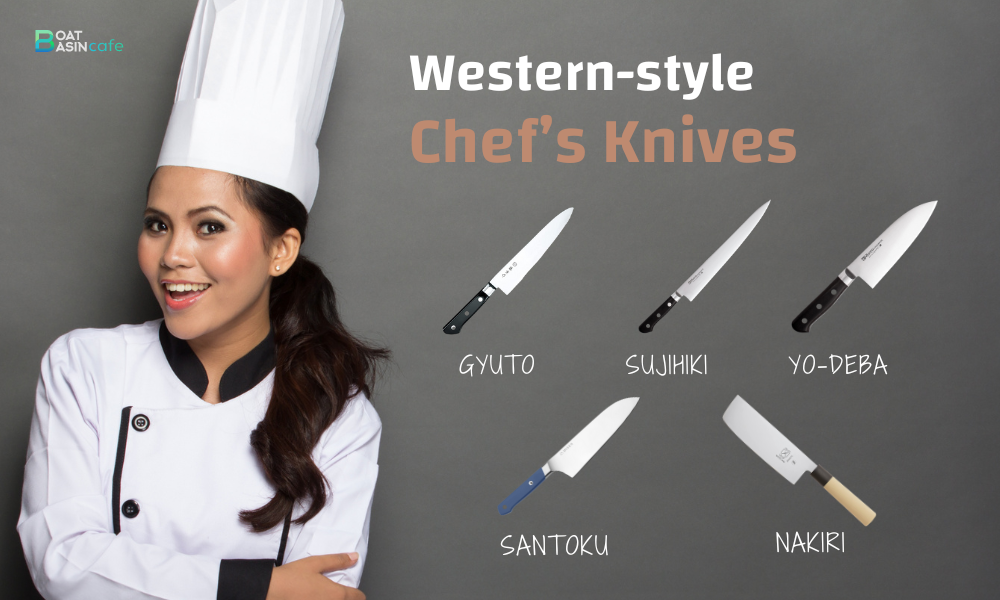
- Gyuto
- Sujihiki
- Yo-Deba
- Santoku
- Nakiri
Gyuto
The Japanese equivalent of the traditional Western chef’s knife is called a Gyuto.
It is a real multi-purpose knife that is suitable for chopping through meats, seafood, vegetables, and fruits.
Features
A pointed tip for precise cutting and working in small spaces.
The heel or chin of the Gyuto is flatter to make cutting, mincing, or chopping with the rocking technique more comfortable.
In this technique, the knife is moved in a back-and-forth motion from the tip to the heel to mince, chop, or cut.
It’s also tall enough to chop with a tapping motion on the middle or tip of the blade
The thinner and lighter blade tends to balance toward the tip.
Purpose
A multi-purpose knife used for chopping meat, fish, vegetables, and fruit.
It can also be used for mincing and dicing.
You can do both a pull-cut and a push-cut with ease with the Gyuto.
Sujihiki
The Sujihiki is a slicer with a long and narrow blade with which you can cut meat or fish with just one drawing motion from the heel to the tip.
Features
A long and thin blade for slicing meat and fish with one stroke.
Blade with an acute edge angle for making it easier to cut with the knife.
The sharp edge, angle, and cutting technique contribute to slicing with minimum damage to the cells and surface of the ingredients.
Purpose
The Sujihiki is great for skinning and fileting fish, removing sinew and fat from meat, and making thin slices of boneless fish and meat
The sharp edge and angle of the blade preserve the texture and flavor of the ingredients.
Yo-Deba
The Yo-Deba is one of the western style knives that are heavy-duty butcher knife types to get through all your meat-cutting needs.
Features
Heavier with a tougher cutting edge for tough use and durability.
Purpose
The Yo-Deba is used for cutting through semi-frozen foods, fish, shrimps, lobsters, and chicken with bones.
However, it’s not advised to use this knife for cutting frozen foods.
Santoku
Santoku means “three virtues” and it can handle fish, meat, and vegetables with ease.
Features
With a lightweight blade, the Santoku knife is of medium size and features a spine that curves toward the tip and a cutting edge that is slightly curved or straight.
Purpose
Great for chopping, dicing, and slicing meat, fish, and vegetables.
Nakiri
The Nakiri has a thin blade and is double-beveled, perfect for chopping and cutting light ingredients like vegetables.
Features
A thin, straight, and lightweight blade for slicing vegetables with precision.
The blade is taller than a Gyuto to make more clearance space for the knuckles above the cutting board.
Purpose
Precision cutting, chopping, and mincing vegetables and fruits.
Not recommended for cutting bones and other tough ingredients.
The Nakiri is a good choice for push- or pull-cutting and tap chopping.
| Western-Style Chef’s Knives | Features | Purpose |
| Gyuto | Thin and light with a sharp, pointed blade with a relatively flat heel or chin | Cutting meat, fish, fruit, and vegetables for Western cuisine Rock chopping or mincing Both pull-cut and push-cut |
| Sujihiki | Long and narrow blade with acute angle | Fileting and skinning fish Trimming fat and sinew from meat Making fine slices of boneless fish or meat |
| Yo-Deba | Heavy and tougher cutting edge | Cutting through semi-frozen food and bones |
| Santoku | Medium-sized with a lightweight blade, a straight or slightly curved edge with the spine curving toward the tip | Chopping, slicing, and dicing meat, fish, and vegetables |
| Nakiri | Double-beveled edge with a thin, straight and tall blade Lightweight | Slicing, mincing, cutting vegetables and fruits with precision |
✍️Note: Sushi chefs generally use three types of sushi knives – Yanagiba, Deba, and Usuba.
Sujihiki Vs Yanagi
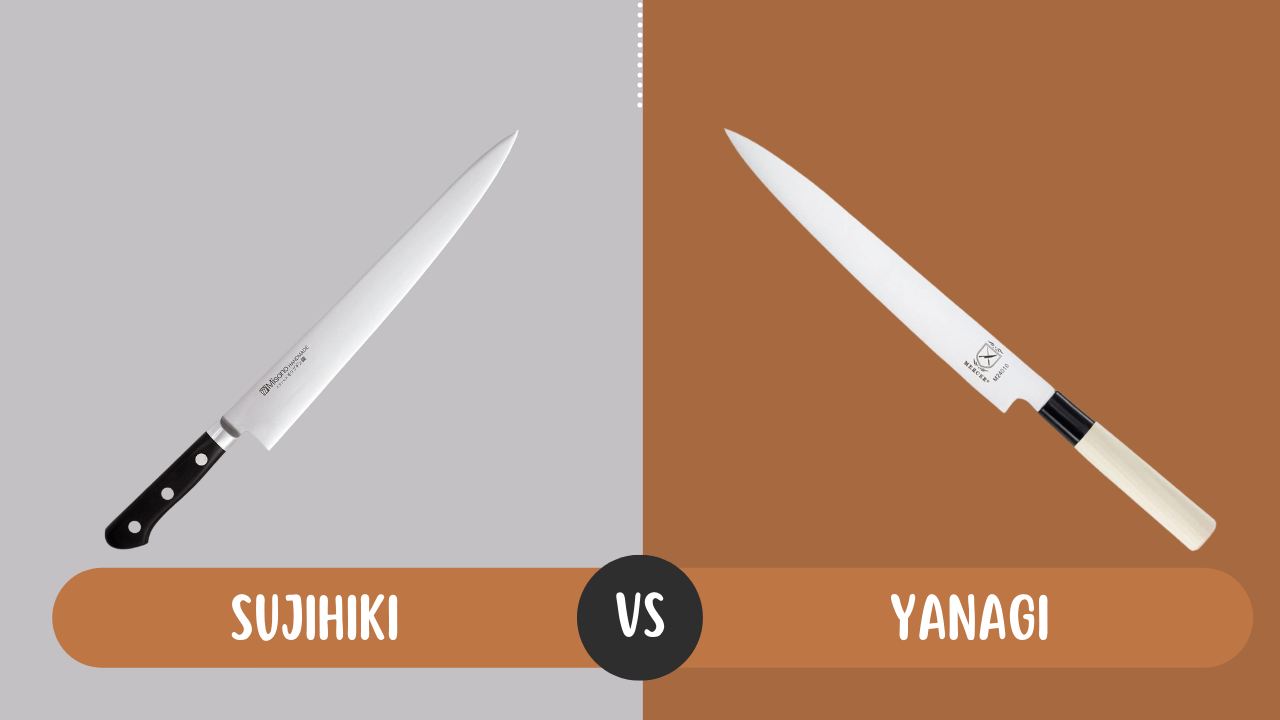
The Yanagiba is revered by some of the top chefs in the world, particularly those who specialize in meat and fish.
When used with discipline and competence, it is a tool that is tremendously sharp and articulate.
It’s possible that you already have at least one in your toolkit if you work as a professional at a sushi restaurant.
However, Sujihiki would be a better option if you’re a home or amateur chef looking for something simpler to handle, sharpen, and utilize to make straight cuts.
A Sujihiki is what you need if the majority of your work includes cutting ham, prime rib, or turkey.
Is There Any Difference Between Sushi Knife And Sashimi Knife?
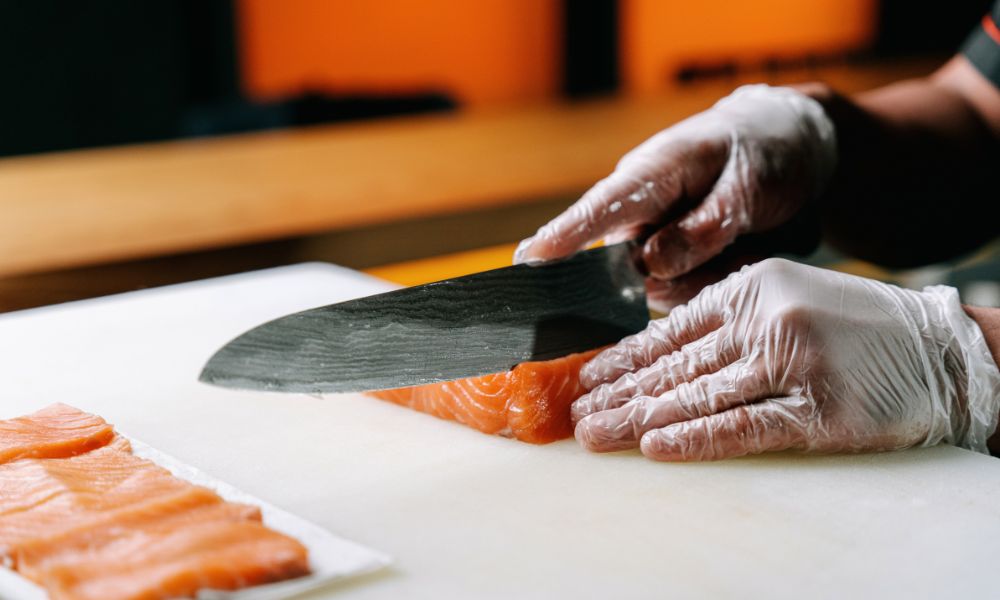
Before we go into the differences between sushi and sashimi knives, let’s get to know what’s sashimi.
Sashimi is raw fish, seafood, or meat consumed with soy sauce. The fish or seafood is usually in paper-thin slices. Sashimi is presented by itself without any other ingredient. And that’s where the main difference lies between sushi and sashimi.
Sushi is made with rice mixed with salt, sugar, and vinegar. Then it’s either rolled with nori sheets with fillings of raw or cooked fish or vegetables inside or shaped into rice balls and topped with cooked or raw seafood or vegetables along with some wasabi.
Sashimi can be cut into a number of different forms, such as flat slices, thin strips, rectangles, cubes, or diagonal slices.
Now. let’s get back to the main topic – is there any difference between sushi and sashimi knives?
Sushi and sashimi are two alternative methods for preparing raw fish.
To preserve the integrity of the item when preparing sushi, you must use precise cutting techniques.
Since it may be used to cut vegetables, fish, and sushi rolls, a sushi knife is more functional.
Sashimi knives, however, serve a more narrowly defined function.
The sashimi knife uses its thin blade to make paper-thin slices of raw fish that are presented on a platter.
Sashimi knives are therefore best used for slicing raw fish.
Because sashimi knives have thinner blades, sashimi chefs find it easy cutting raw fish without sacrificing the texture’s quality.
Types Of Steel Used In Sushi And Sashimi Knives
Three types of steel are used to manufacture Japanese and western style knives.
The materials vary in terms of durability, maintenance, and price.
Carbon Steel
This kind of steel has the sharpest edge possible but needs the most upkeep and is susceptible to rust.
Therefore, if you get a sushi knife made of high carbon steel, you will need to sharpen it more frequently than a knife made of another type of steel and you will need to be very careful to keep the blade thoroughly cleaned and dry.
Stainless Steel
Stainless steel has the benefit of not rusting but on the flip side, it doesn’t have the sharpness of carbon steel or composite steel.
This brings us to the last type of steel used for making sushi knives.
Composite Steel
Composite steel has the benefits of stainless steel in that it doesn’t rust easily and therefore, doesn’t need high maintenance.
It has the advantage of being sharper than stainless steel sushi and sashimi knives.
One possible downside is the price of composite steel knives – it’s higher than both carbon and stainless steel knives.
Best Sushi Knives For Value Seekers
Best sushi knives for beginners who are looking for one within a low-end budget include:
Masahiro Stainless Steel Yanagiba 240-millimeter
This Masahiro Yanagiba is a perfect combination of affordability and good quality.

Features
- Rust-resistant – made from original stainless steel by Masahiro, it’s a low-maintenance knife as it is resistant to rust.
- Sharp – the stainless steel blade is extremely sharp for making precise cuts.
- Water-resistant and durable – a combination of compressed laminated wood and resin makes the handle resistant to water, thereby making it durable and anti-slip.
Tojiro DP Gyuto 8.2-Inch
This knife has a core made of cobalt alloy steel that’s covered by outer layers of chromium stainless steel.

Features
- Durability – Made with alloy steel in the core and VG-10 high-quality outer steel for durability.
- Sharp – VG-10 steel makes the cutting edge very sharp.
- Good value for money – perfect entry-level Japanese knife under $100.
- Ergonomic – the handle is made from reinforced laminated material and fits well.
Best Sushi Knife Names For Experiencers
For those who can afford to spend a little more and get better at making sushi and sashimi, they can choose the following.
Yoshihiro 8.25 Inch Damascus Gyuto
This Yoshihiro sushi knife, like all others of the same brand name, is made in Seki City, Japan.
As Seki is the city that has made sushi knives for centuries, it’s naturally a mark of high quality when your sushi knife is made there.

Features
- Durable – made from high-end VG-10 Japanese steel for added strength and durability.
- Stronger – with 1% carbon content, this high-carbon knife has stronger steel.
- Sharp – the stronger steel enables the blade to be sharpened to get a finer edge.
- Rust-resistant – 15% Chromium content makes it rust-resistant.
- Ergonomic – Octagonal handcrafted lightweight and ergonomic handle.
Sakai Takayuki 17-Layer Damascus VG-10
This knife is a beauty to look at and functions superbly with its sharp and durable blade.

Features
- For both right and left-handed users – The double-beveled knife can be used ambidextrously.
- Sharp – extremely sharp blade that’s slanted like a Japanese sword for delicate cuts.
- Durable – VG-10 stainless steel to make the knife long-lasting.
- Great looks – hammered pattern on 17-layered Damascus steel and mahogany handle that’s water-resistant.
Yoshihiro Inox Honyaki Stain Resistant Steel Wa Gyuto
Top-class knife with supreme versatility, check Amazon for the price of this Honyaki knife.

Features
- Aesthetics – beautifully handcrafted and mirror-finish polish.
- Strong and durable – INOX Aus-10 steel that is forged at temperatures reaching thousands of degrees and then cooled down for strength and durability.
- Multipurpose – can be used for slicing, dicing, and chopping.
Sakai Takayuki Ginryu Dragon Premium Honyaki Japanese Chef’s Yanagiba(Sashimi) 270mm
A razor-sharp and efficient sushi knife for those who are aspiring to be a sushi chef.
Features
- Extremely sharp blade – made from top-quality Swedish stainless steel.
- Exceptional rust resistance – made from a special stainless steel alloy with a low amount of impurities to prevent the formation of rust.
- Hard edge with excellent retention – the Honyaki process produces a very hard edge that retains sharpness.
Sushi Knives For Big Spenders
For professional chefs or those who want only the best money can buy, check out the following sushi knives.
Yoshihiro Kasumi Knife Shitan 3-Piece Set
Yoshihiro is one of the top sushi knife brands and this knife set has three different knives to suit all your chopping and cutting needs.

Features
- Versatile – the Yanagi, Usuba, and Deba knives in the set can be used for all cutting and slicing purposes.
- Sharp – Shiroko high-carbon white steel core ensures superior sharpness and retention.
- Superior craftsmanship – handcrafted rosewood handle with rosewood bolster.
- Durable – Outer layer of forged softer iron ensures durability.
Japanese Chef’s Knife ARITSUGU Blue Steel Honyaki Yanagi
This 14.17-inch knife is not for the faint-hearted!
Check price on Amazon.
Features
- Superior construction – made from stainless steel, Blue steel, and ceramics for durability.
- Personalization – you can have your name carved on the blade.
- Extreme sharpness – the alloy steel is hard and gives a sharp cutting edge for making extraordinary sushi and sashimi.
Benefits Of A Good Sushi Knife

You need to invest a bit in a good quality sushi knife to get the full benefits of using one.
- For the finest results, use good quality sushi knives to slice your fish and veggies.
- They work to ensure that your contents are distributed and proportioned properly so that your sushi maintains its structural integrity.
- High-carbon stainless steel is used to make a high-quality sashimi knife, which is extremely robust and have razor-sharp blades.
- High-quality sushi knives have been ergonomically constructed to allow for prolonged use.
- Sushi knives with a variety of blade types, weights, and sizes will suit your demands more effectively.
There are plenty of reasons why you shouldn’t use a cheap alternative.
The cheaper alternatives that are touted on online marketplaces may end up getting you more frustrated instead of motivating you to make sushi and sashimi at home.
A cheaper knife will not be durable and its blade will be more susceptible to breaking.
In the long run, you end up buying more of these cheaper knives and spending more unnecessarily when you could be using better quality and pricier knives from the start.
Besides, cheaper sushi knives are not made from top-quality materials and won’t be razor-sharp – a must-have quality for sushi chefs.
Only sharp blades can help you cut slices of fish and vegetables with precision and ensure that your sushi is intact.
Handles of cheap sushi knives are not well-crafted and might easily slip, creating hazards in the kitchen.
Last but not least, using cheaper knives will leave your sushi looking messy with uneven cuts.
This won’t make you look good as a chef, nor will it make the sushi look appetizing.
How To Choose The Best Sushi Knife
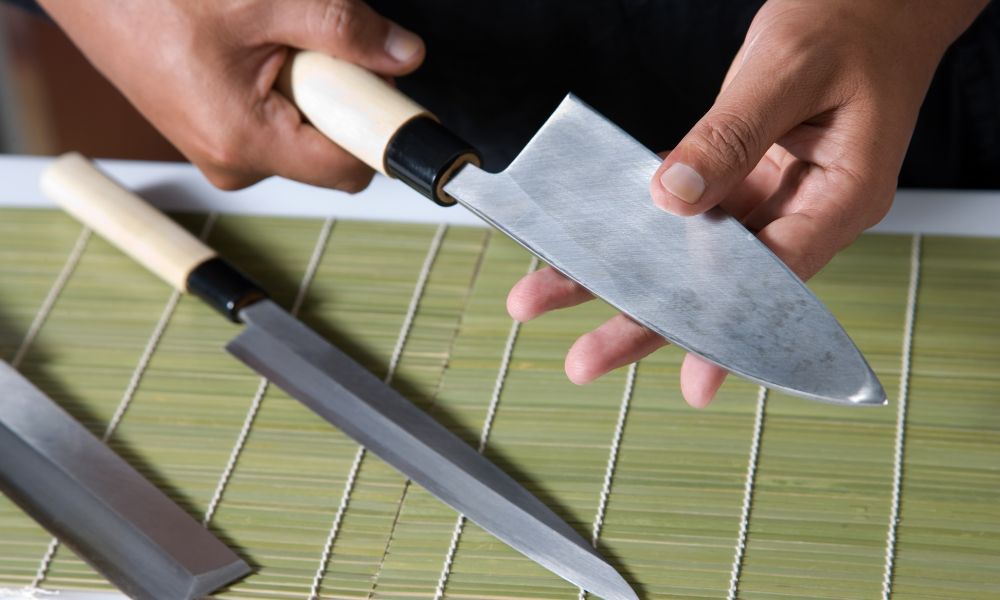
Look for these factors when choosing the best sushi knife.
After all, you don’t want to keep changing from one knife to the next, so it’s better to be patient and choose a high-quality knife rather than regret it later.
Purpose
First, you need to decide what you’re going to do with a Japanese sushi knife.
For example, if you want to use it to cut through small bones or chop off the head and tail of a whole fish, then Deba should be your choice.
If you are looking for super-thin slices of raw fish and vegetables for sushi or sashimi, Yanagiba is your best bet.
Materials
As discussed earlier, choose high-quality materials with which the sushi or sashimi knife has been made.
Otherwise, you will have to compromise on the quality of cuts, the appearance of the final dish, the durability of the blade and handle, safety when operating in the kitchen, and saving money in the long run.
Choose knives made of carbon steel as this is a popular material for making traditional Japanese knives.
Due to their high purity content, knives made from this material are sharper although they are not rust-proof.
Handle
The handle of Japanese knives is made from wood.
Before you buy a sushi or sashimi knife, check out the handle.
Feel it in your grip and see how comfortably your hand fits in the handle.
The handle should have an ergonomic design to prevent the hand from slipping.
If the handle is D-shaped, it’s likely to be handled more comfortably when used for a long time period.
Also, look for signs of whether the handle is full tang or partial tang.
A full tang knife handle with the steel blade running across the full length gives you more balance and won’t tire out your wrists.
Such a handle also increases the weight of the knife.
A partial tang or a rat-tail tang tapers down toward the end of the handle and is covered by the wooden handle.
These knives that have a partial tang are less expensive and weigh less.
If you buy a knife with a partial tang, its lightweight feature will cause you less stress.
However, knives with a partial tang will not be as durable as full tang ones.
Moreover, you can’t use a half tang knife for cutting through tough materials like pumpkin or melon.
Before you buy a sushi knife, check if the blade can be seen between the end of the visible part of the steel blade and the part where the wooden handle begins.
If you can see it, don’t buy it as it shows it’s not been secured properly and the blade will come off the handle.
Blade
The blade is the most important part of the sushi knife as it is THE part that cuts the food.
Choose a sushi knife made from high-grade materials – preferably high carbon stainless steel – so that you know you have the best blade at your disposal that won’t give away while you’re working.
Moreover, the material will keep the blade durable, and resistant to rust, stains, and corrosion while maintaining its sharpness.
Check the sharpness of the blade to ensure you get exactly the cuts you want.
While you check the blade construction, check its length as well.
With a length ranging from 9 to 10.5 inches, Yanagiba knives are often substantially longer than other sushi blades.
The length of other sushi knives, like Nakiri or Santoku knife, is often between 6 and 7 inches.
Thinking about the type of sushi you want to eat and selecting the right length for the task are the keys to getting the best sushi knife for your needs.
How To Sharpen Sushi Knives
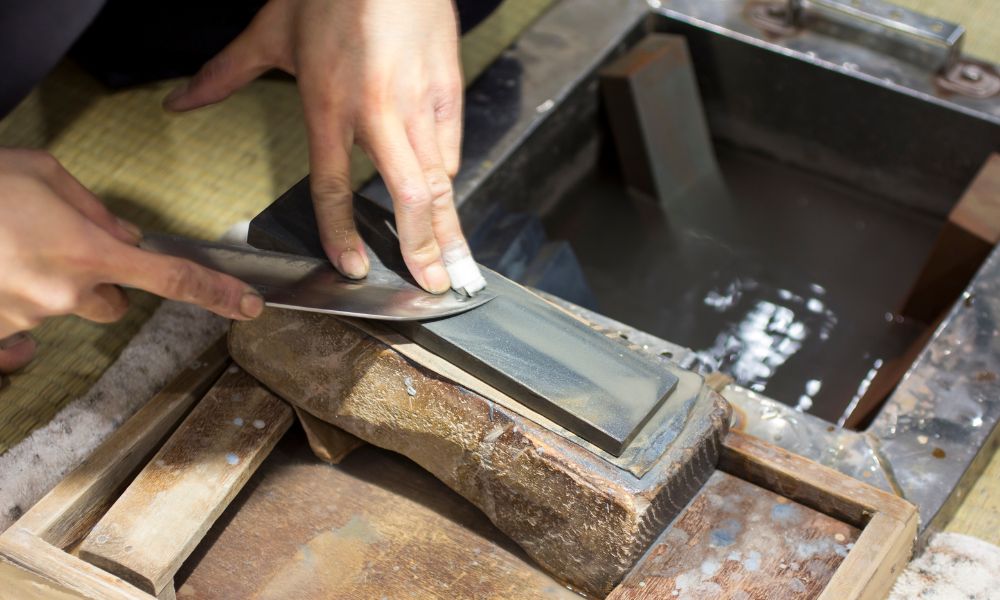
It’s normal for sushi chefs to keep the tool of their trade sharpened on a regular basis.
It’s widely believed that cleaning and sharpening the knife every day and letting it rest overnight improves the taste of food.
Sushi chefs like to hone the blade of their knives before it gets too blunt.
This keeps the knife sharp and saves them from spending a lot of time getting back the desired sharpness.
If you recall, traditional Japanese-style sushi knives are sharpened on one side of the blade or single-beveled.
On the other hand, western style knives are sharpened on both sides of the blade or are double-beveled.
This difference also creates different ways to sharpen sushi knives.
Prepping The Whetstone
Whether you’re sharpening a single – or double-edged knife, preparing the whetstone is essential.
Here’s how to do it.
Soak the whetstone and stone fixers in water for 10 minutes or until you don’t see any more air bubbles before sharpening your knife on it.
Using the stone fixer, level down the sides of the whetstone and sand the top of it to make it flat.
On a damp towel, place the whetstone with the narrow end pointing away from you.
The towel will help the whetstone stay in place when sharpening the sushi or sashimi knife.
Speaking of whetstones, there are three main types that you need to know about.
Each type of whetstone is used for varying levels of damage on the blade.
- Arato
It’s a coarse grit stone to fix damaged edges and create new ones.
The average grit of the Arato varies between 400 and 600 and can go either above 600 or below 400.
- Nakato
For creating a sharper edge and for slight repairs, the Nakato whetstone is used as it has a medium grit between an average of 1000 to 1200.
- Shiage
The Shiage is a fine-grit stone used for polishing or finishing.
It has an average grit of 6000 to 8000.
If you’re a home chef and wondering which whetstone is best for you, choose a combination stone with Nakato on one side and Shiage on the other.
Note: You leave tiny scratches on the metal’s surface while sharpening with medium-grade grit (Nakato).
Moving to the finer grit (Shiage) polishes out those dings to produce a polished, sharp edge.
In order to polish along the same lines and in the same direction as you did when you formed them with the more abrasive stone in the previous stage, it is crucial to maintain a constant angle of the knife to the stone during the entire sharpening process.
How To Hold The Sushi Knife When Sharpening
Your thumb should be on the flat section of the knife’s blade, your index finger should be on the spine, and the remaining three fingers should be wrapped around the blade.
Hold it comfortably, but not in a way that would be similar to cutting with it.
Although it can range from 45 to 80 degrees, the angle between the knife and the stone should be between 60 and 70 degrees.
Maintain a constant angle for the best results.
How To Sharpen Single-Edged Knives
You should know how to sharpen traditional Japanese knives that are single-beveled to prevent the blade from getting damaged, bent, or rusted.
Follow the steps below to sharpen a single-edged sushi knife.
- Put two or three fingers of your left hand, starting at the tip, near the edge of the knife while holding the knife against the front of the stone closest to your body.
- When you push the knife down the stone, apply equal pressure to the blade edge where your fingers are because here is where the sharpening is taking place.
- Place the knife along the length of the whetstone and push.
When you move the knife forward and back to the beginning position once more, let go of the pressure on your fingertips.
Before moving on to the next portion of the blade, repeat this action one more time.
This is particularly true for the Yanagiba due to its more delicate and thin blade.
Finish off the current part of the blade with no more than 5 or 6 strokes.
- As you proceed down the blade, be sure to maintain the same angle of the knife to the stone and the blade edge to the stone.
- Look out for the burr forming along the edge of the blade as you start to sharpen it.
- Once the burr shows along the whole length of the cutting edge, put the blade on its reverse side flat on the far side of the whetstone and perpendicular to it.
- Put your left hand’s middle and index finger against the edge of the blade while softly pressing your thumb against the spine.
- By applying gentle pressure on your fingers, pull the blade toward yourself.
- Proceed to the next section of the blade until burr forms on the entire length.
- Remove the burr with a clean cloth to finish off the sharpening process.
✍️Note: Sprinkle water on the stone as necessary to lubricate it, but leave the sludge that accumulates because it helps the sharpening process.
How To Sharpen Double-Edged Knives
Western style Japanese knives like Nakiri or Gyuto are double-edged and need to be sharpened differently.
Consult the manufacturer’s guide to find out the angles of the front and back edges of the blade.
If you can’t do that, here’s how you can find out the angles:
- Put the blade’s face flat against the whetstone.
- Put your fingers half on the whetstone and half on the edge of the blade.
- Raise the knife slowly to feel the flat touch of the bevel on the stone.
You want to sharpen this side at this angle.
- Repeat the above step for the other side of the blade.
- Continue to sharpen both edges of the blade in the same way as you would sharpen a single-bevel knife.
Care And Maintenance Tips
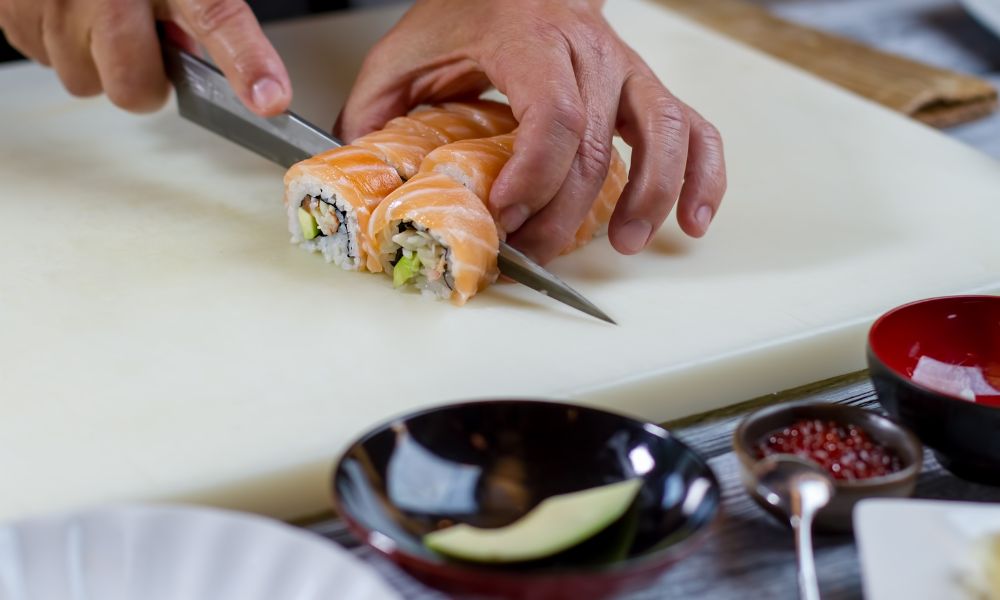
- Do not cut frozen food or tough bones with a sushi knife as it will dull and damage the blade.
- If you are using your sushi knife to cut ingredients that are acidic like lemons, sushi (with vinegar), or apples, make sure to wash and wipe the knife often.
- Never use a sharpening steel to sharpen your sushi knife. Always use a whetstone or a water stone as suggested by the manufacturer.
- Always handwash your sushi knife after each use with soapy water and give a final rinse with hot water.
- Use tissue paper or a towel to dry your sushi knife especially if your knife is made of carbon steel. This material is prone to rust and leaving water droplets will cause the blade to rust.
- Never try to roast the knife over a fire to dry it quickly as this would affect the sharpness of the blade.
- If you do notice discoloration due to rust on the sushi knife blade, wet the knife and place it on a chopping board. Sprinkle with a powder cleanser to cover the area of rust evenly. Take a cork and put it in water. Use the wet cork to rub the area of rust while making sure the blade doesn’t move from its place.
- Never wash your sushi knife in a dishwasher.
- Before putting it away, add a thin layer of any plant-based oil with tissue paper, wrap your sushi knife in a newspaper, put it in a case, and store it in a separate space either on a rack or in the drawer. The newspaper contains some oil as well and will prevent any rust from forming.
- As the blades are more delicate in traditional Japanese knives, apply caution when using them as direct contact with bones, stones, or any hard material can damage the blade.
- Avoid twisting the blade when you are removing the knife from the raw fish to prevent the blade from bending and losing its shape.
- For sterilizing the knife, always use hot water, never an open fire.
FAQs
What Is A Japanese Sushi Knife Called?
“Wa-bocho” is the term that refers to traditional style Japanese sushi and sashimi knives.
What Kind Of A Knife Is Best For Cutting Sushi?
Yanagiba is the best knife for cutting sushi.
What Is Special About A Sushi Knife?
Their single-beveled edge, the flat part of the blade that prevents the food from sticking to the blade, the multifaceted blade that can cut vegetables, fish, and roll, a D-shaped handle for comfort, and the tang or part of the blade that can either run the full length or partial length of the knife.
What Kind Of Knife Is Used For Sashimi?
For sashimi, you need a knife with a long and narrow blade like a Yanagiba.
